Around this time last year I looked at five Ligue 1 prospects outside of the four traditional big clubs in France, as a way of illustrating the deep talent pool that exists in Ligue 1. Looking back a year later and it’s interesting to see where each prospect stands. Both Nordi Mukiele and Yves Bissouma made moves to clubs outside of Ligue 1 in RB Leipzig and Brighton respectively, Jonathan Bamba was signed by Lille, while Wylan Cyprien and Ismaila Sarr stayed at their respective clubs.
With Mukiele, his sample size of 711 minutes in the Bundesliga makes it rather hard to have strong opinions on his season either way. In the case of Bissouma, it’s fair to say that Brighton haven’t gotten their full value in season one. That’s not to say that Bissouma hasn’t shown signs of the upside that he has but the totality of his season has been shaky (though there’s also something to be said about how tough it can be for new players to transition their play style into a Chris Hughton led side).
Both Cyprien and Bamba have more or less been at the same level that they were the season prior, but at least Bamba moved to a club that has a very good chance of playing in the Champions League next season. Sarr is arguably the only player to have their stock rise a year later, as he’s added more functional playmaking to complement his direct style of play and become a more well-rounded threat, setting himself up for a potential noteworthy transfer this summer.
In the spirit of last year’s iteration, this article will follow a somewhat similar format. Instead of focusing solely on Ligue 1 young talents, we’ll be looking more at Europe as a whole. None of the three players profiled currently ply their trade in one of the big clubs in their respective leagues. As well, each player is 23 or under as of March 29, 2019. It follows the same idea where we’re trying to profile players that at the very least will have several prominent years ahead of them.
Without further ado, let’s get to it:
Ritsu Doan (Groningen, 20)
As the modern game has continued to evolve, it’s become more apparent that to succeed at the highest level, wide players must have a requisite level of passing skills to go along with high level athleticism.
Though it's not uniform across the board, as you’ll find wingers who don’t necessarily fit that combination and still perform at a top level, more and more of the best teams employ wingers that have that combination of on-ball skills and upper tier athletic gifts.
That’s what makes someone like Ritsu Doan an interesting winger to profile. On the surface, Doan’s statistical production doesn’t necessarily jump off the screen as both his shot and xG contribution is rather ordinary.
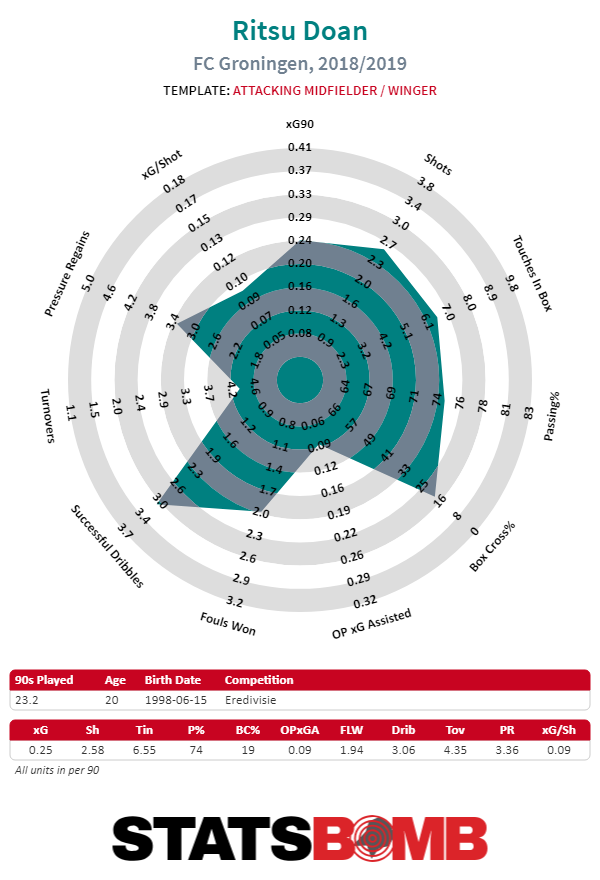
Yet, when watching tape of him, it’s hard not to get intrigued. Sure, playing in the Eredivisie can make it a bit tough to judge young attackers, but given that Doan plays for a smaller Eredivisie side in Groningen, those worries get alleviated to some extent especially given that they rank below average in both shot generation and expected goals for.
In particular, Doan's awareness to attempt high value passes is cause for some optimism. He's first among Groningen players in both throughball passes created and open play passes into the box on a per 90 basis. He's got half of what you would want from a young attacking talent: when he sees an opening to try a high value pass, he's not afraid to take his shot.
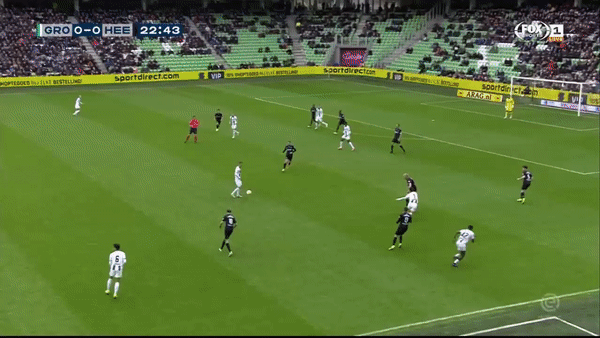
As well as his passing, Doan's dribbling abilities are quite pronounced. He's able to apply his skills on the ball to a number of situations, giving himself some versatility. If he's covered in tight areas, he can maneuver himself into some open space to ponder his next action.
He can beat people off the dribble in one on one situations on the flanks, and he has the sudden explosion to pounce on an opening and put an opponent on their heels. Combine that with good balance and some shiftiness when on-ball, and you've got yourself a wide player with some dynamism.
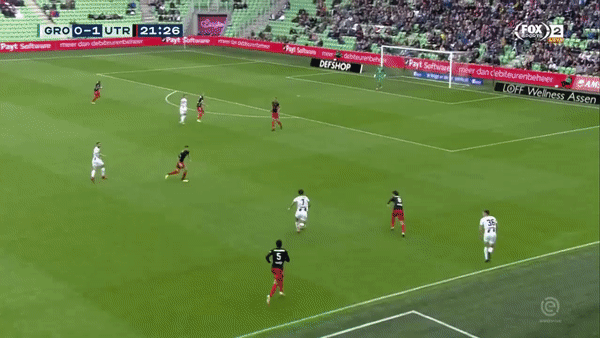
That dribbling ability can also act as a bit of a curse for Doan, as he's prone to having tunnel vision and not picking out an open teammate while he's in full stride. As well, it's not uncommon to see him running into people when he's carrying the ball forward.
But these things are forgivable for a young wide player who isn't on a good team, given that the upside he flashes is tantalizing. Ritsu Doan seems like a good candidate for a bigger Eredivisie club to take a chance on, perhaps not quite yet for the likes of Ajax or PSV, but more so clubs on the next level.
Stefano Sensi (Sassuolo, 23)
Of the three players listed, Stefano Sensi is the one most likely to make the jump to a major European club. At age 23, it makes sense given that he's close enough to his prime years that bigger clubs can envision him coming into their midfield and making an immediate impact.
Sensi is a fascinating figure within Italian football given that he's been looked at as a potential dynamic midfielder for the future. As for this season, he's been part of a Sassuolo side that's had some success playing an adventurous possession game in attack, doing a little bit of everything from the midfield and linking things together.
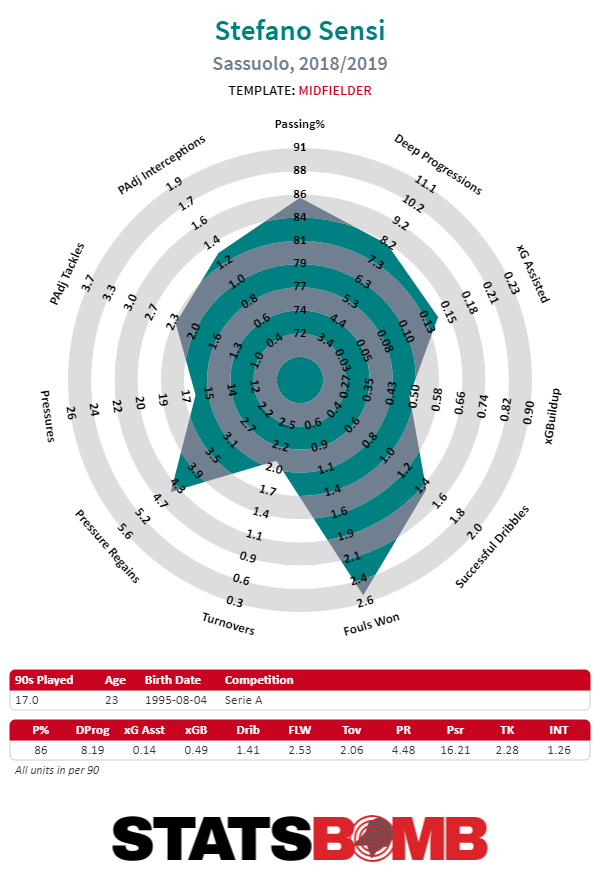
It isn't hard to see the appeal of Sensi's game. He has decent mobility and the shiftiness to carry the ball on occasion, especially during transition opportunities. On-ball, he's a smooth operator with an array of passes in his arsenal.
He's constantly aware of his surroundings because of his scanning, and in situations where he feels that he's going to be pressured by the opponent, he's happy to recycle the ball and continue possession via one touch passing. Sensi's scanning gets to another part of his game that's quite effective, because of his awareness, he's able to position himself during buildup play where he presents himself as an option for the CB in possession.
If the oppostion tries to take him out as a possible passing option during buildup, he'll try to shift a little bit in one direction to get himself into open space and receive a pass. When you add in the recognition and awareness to attempt difficult long passes, you have the type of midfielder that should fit well at larger Serie A clubs.
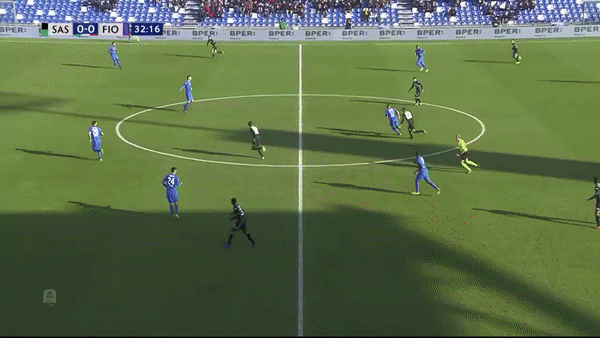
One area that will be interesting to monitor is how Sensi would fit defensively at a new club. Sassuolo have not been good on defense this season as they're 5th from the bottom in Serie A in xG conceded. Sensi's defensive output is decent when accounting for Sassuolo's defensive style.
In metrics that try to analyze how much a club presses, like passes allowed per defensive action or how far away from their own goal a team perform's defensive action, Sassuolo rank at the lower end of the table. Even within Sassuolo's defensive inadequacies, you'll see moments where Sensi's defensive awareness is present, whether it be shutting off passing lanes or making timely gambles on defensive actions.
The reported links to Milan make sense given that Milan have similar pressing metrics to Sassuolo, but they've done what Sassuolo haven't been able to in ably suppressing shot volume and location, so transitioning could be smoother there than at other clubs.
Enock Kwateng (Nantes, 21)
Ligue 1 is always fascinating to analyze when it comes to young talents, as the league offers the best balance of high upside prospects at affordable pricing. This upcoming summer will be of particular interest because there are three right-backs who don't play for major French clubs that have relatively high ceilings: Enock Kwateng, Valentin Rosier, and Youcef Atal.
Atal has the highest ceiling of the three, and it's been interesting seeing him play further up the pitch as the season has progressed, but Rosier and Kwateng aren't slouches in their own right. Kwateng in particular has had a productive season with Nantes at age 21.
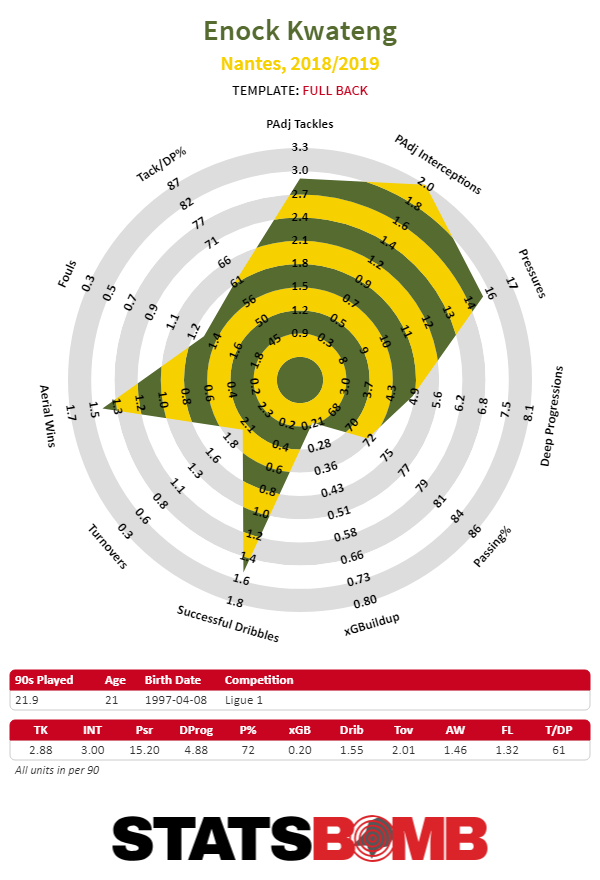
The defensive output is what stands out here, but I'm more fascinated with what Kwateng can do during possession. He's a decent dribbler but I wouldn't necessarily call him a very good one as a full-back. Where he's particularly good is when he collects a loose ball and immediately makes a snap decision to try and beat the initial man before laying it off to a teammate.
When he's positioned high on the right side, he'll try to make an off-ball run behind the backline to receive the ball in space for potential crosses into the box, though his crossing to this point is fine but nothing special. Kwateng's passing outside of crosses is where I'm most intrigued. It can look a bit awkward at times, but he's shown some decent passing abilities.
If a teammate makes a run to the right wing near the box, he'll attempt lob passes to that area. He also has some comfort attempting passes into the right halfspace if someone is open.
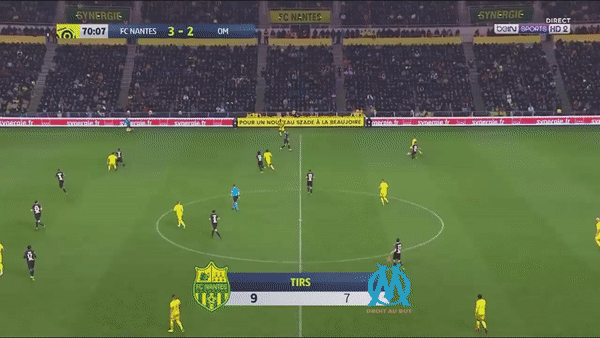
Kwateng's defensive work is a bit of a mixed bag despite the high defensive output. His high positioning during possession means that a quick turnover in play would leave him exposed when play goes the other way. Kwateng has a penchant for gambling when trying to pressure opponents and that leads to him playing a part in unraveling the team's defensive structure.
His awareness off-ball can be lacking as there'll be times where the opposition gets on his blindside and makes runs to the edge of the box. However, his recovery speed is quite good so more times than not, he's able to compensate that with applying late pressure on the opponent to make up for earlier mistakes. When he has to defend in isolation situations on his side where he's not had to move much previously, he's disciplined in not overextending himself.
It's certainly encouraging that in his first full season in a top five league, Enock Kwateng has held his own, though that doesn't necessarily mean that he's tipped for future stardom. What makes him intriguing is that reports suggest that his contract will be expiring after this season, making him a candidate for a free transfer in the summer.
While I don't necessarily think that Kwateng has star-level upside, it's certainly reasonable to think that he can be a solid right-back for years to come. Getting young fullbacks of that caliber for cheap represents massive value for the club, especially for mid-level Premier League clubs in the market for right-backs who are trying to find value in the transfer market while the rest of Europe uses them as an ATM machine. For clubs in Europe, Kwateng represents an opportunity to secure an affordable first XI caliber fullback and reap the rewards in the future.
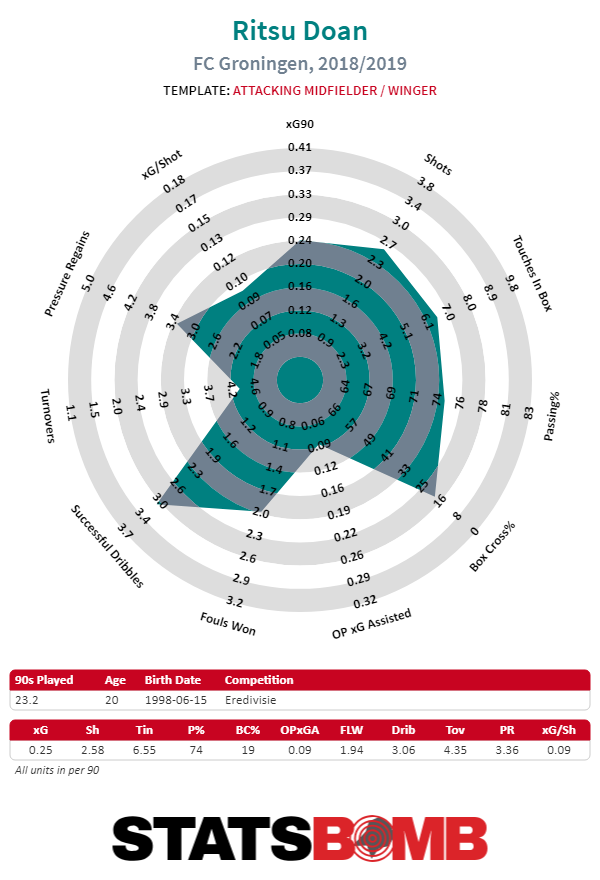
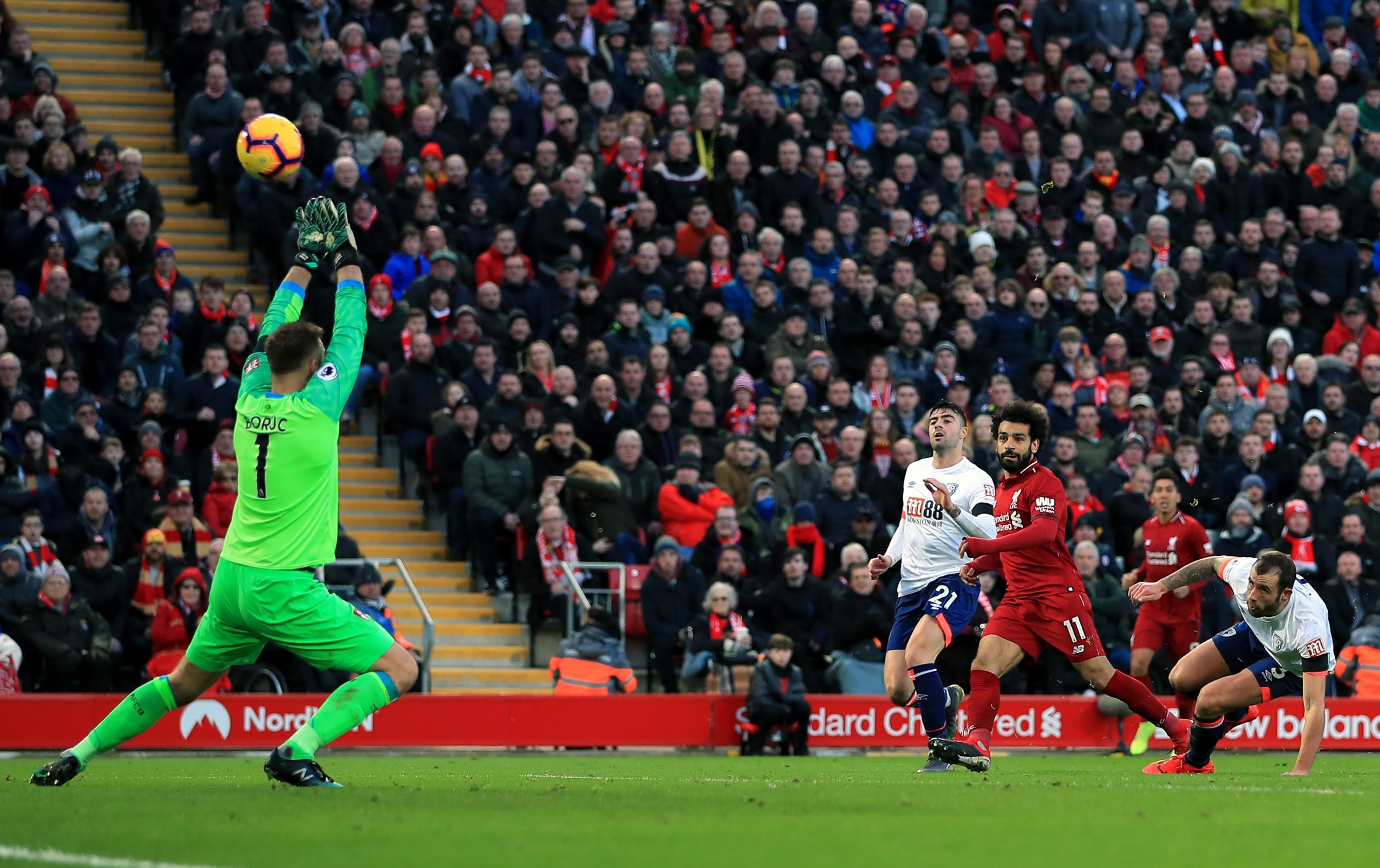
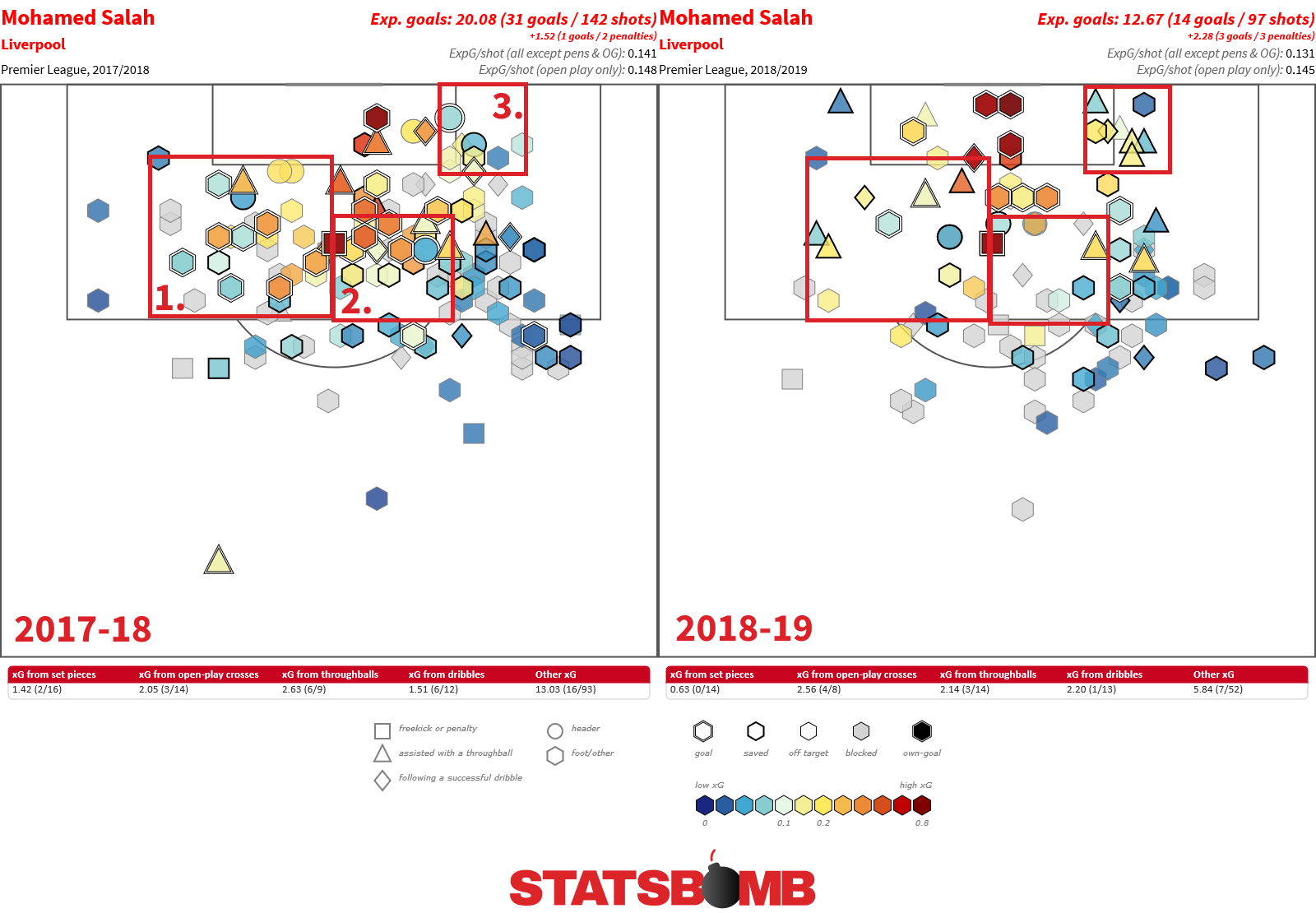
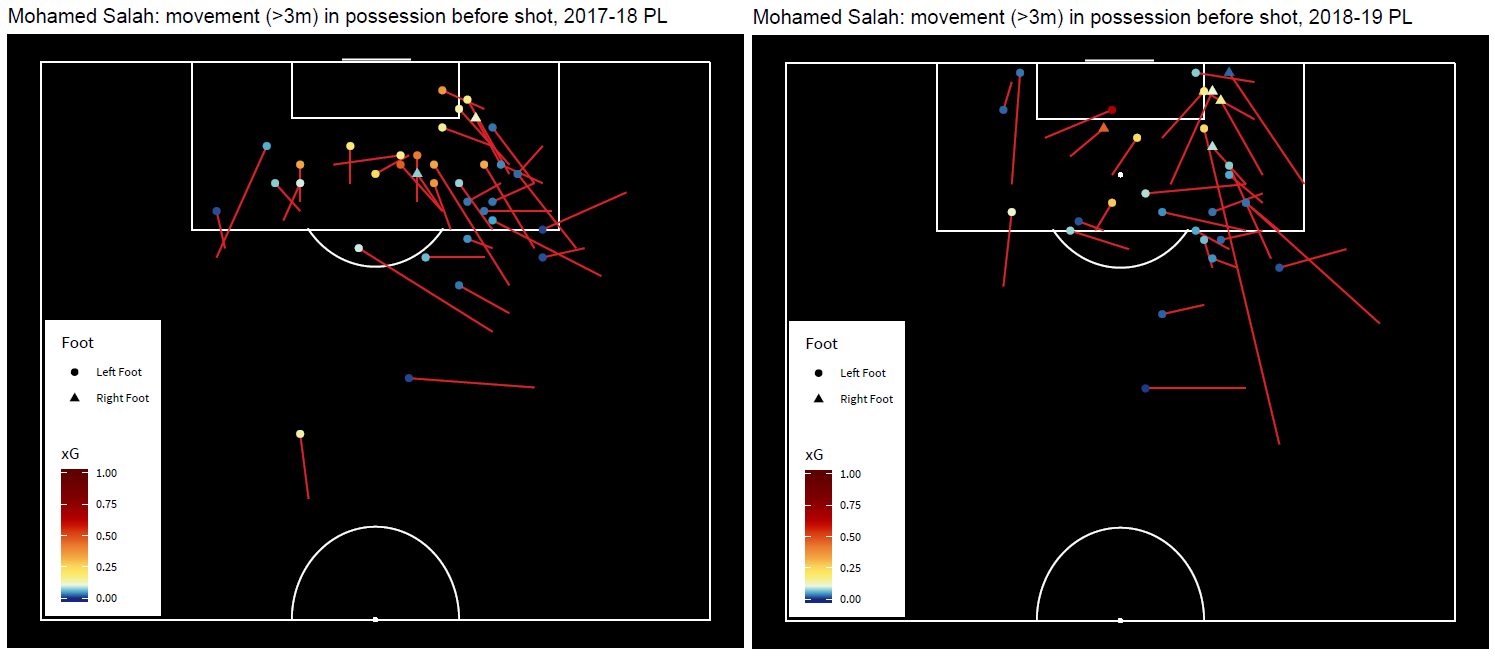
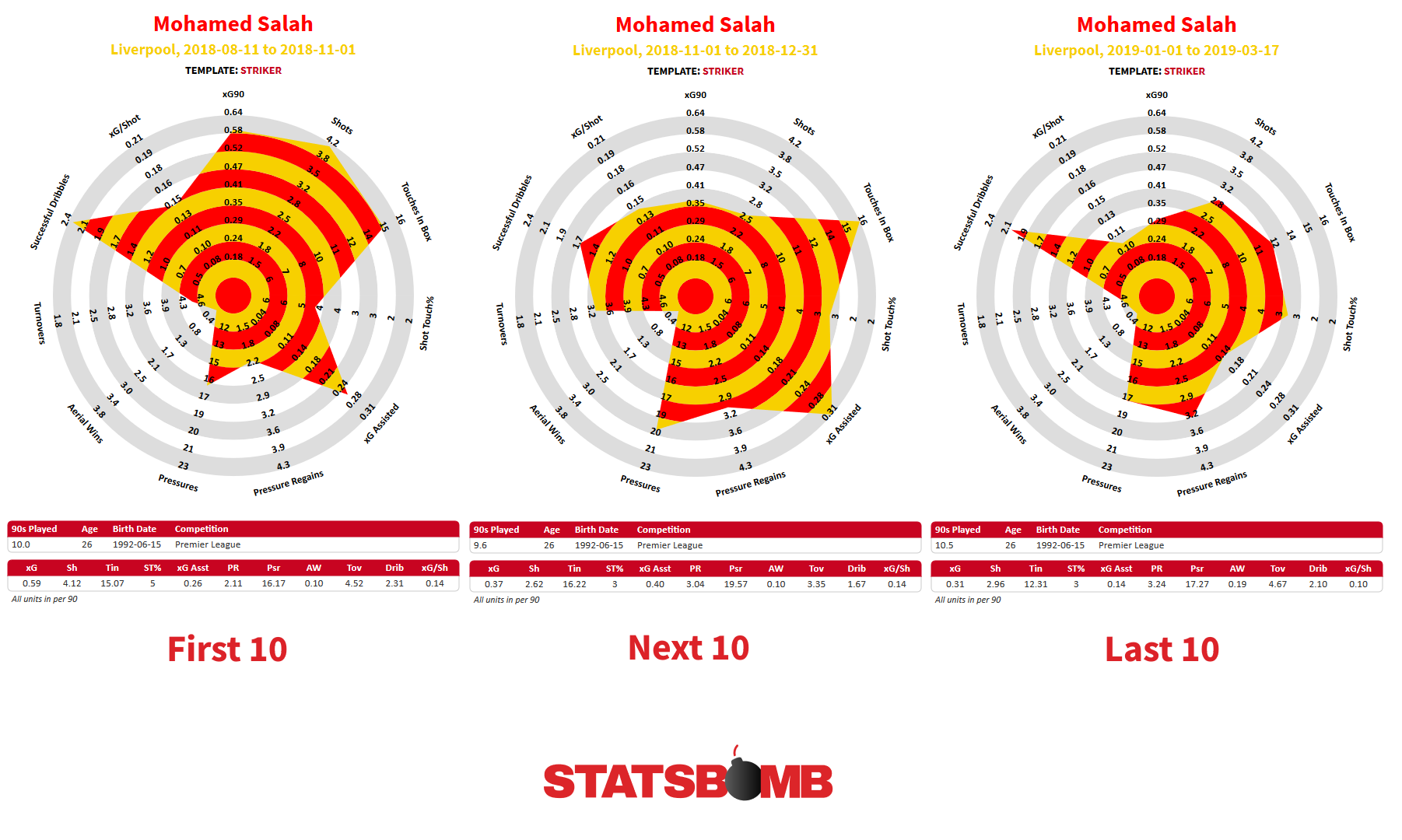
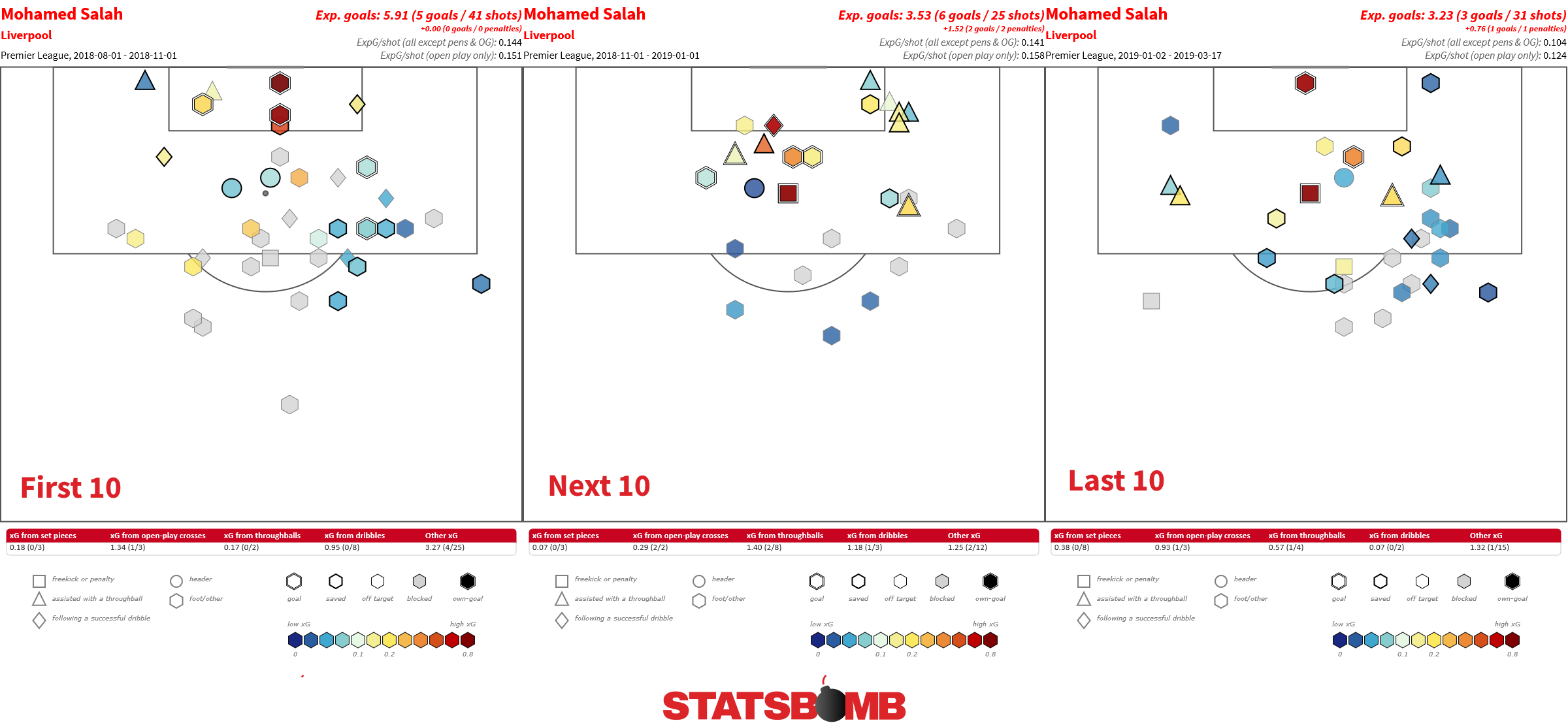
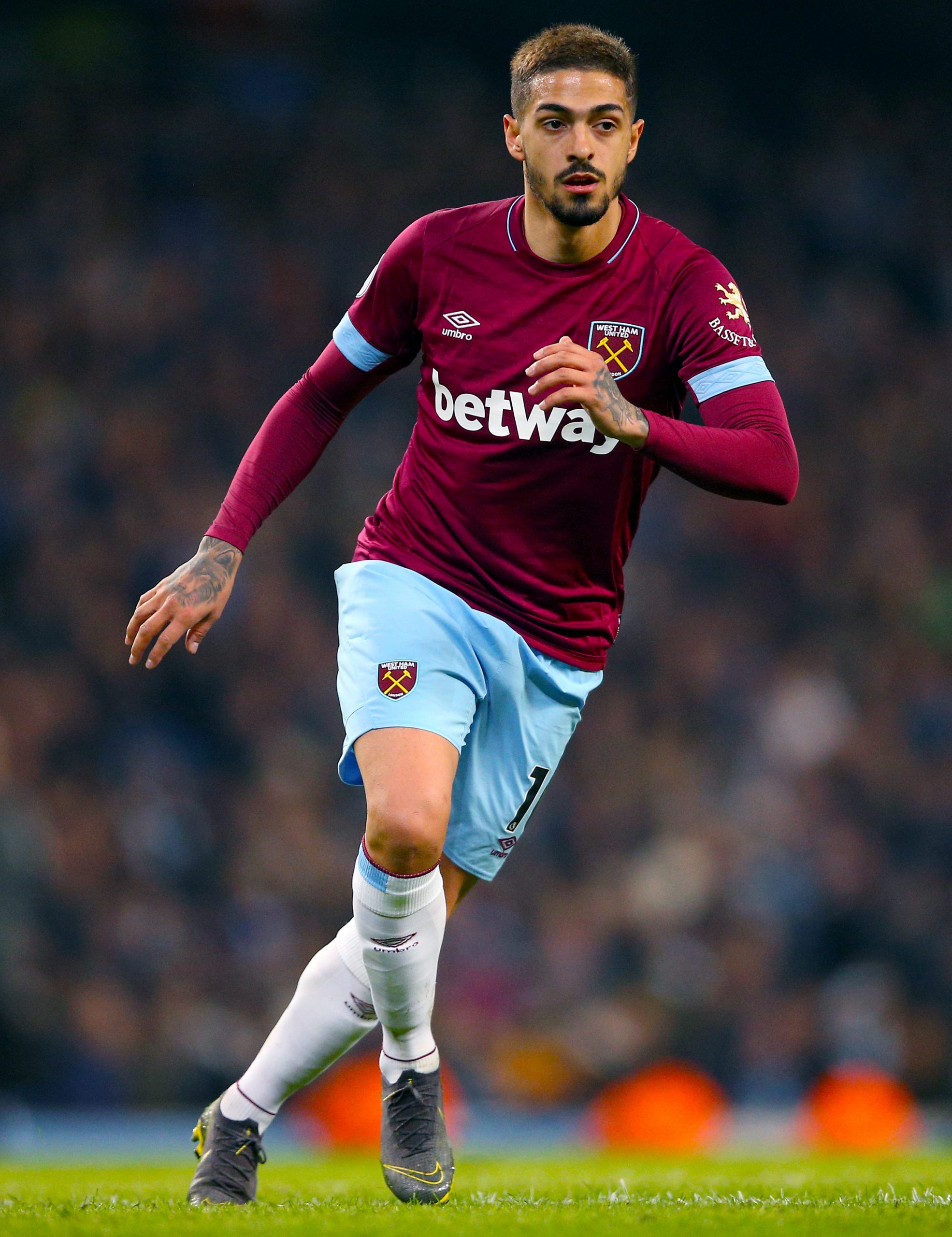
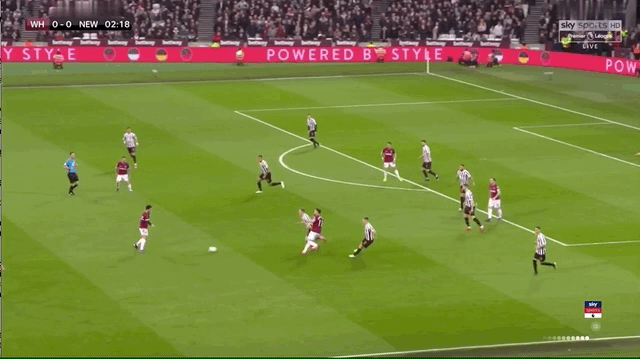
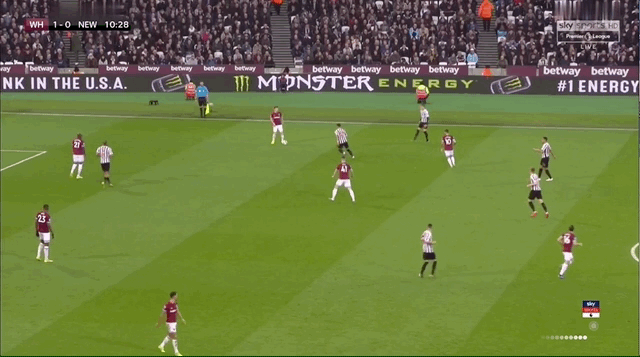
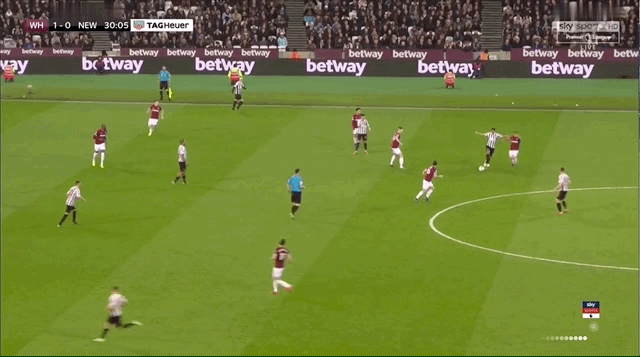
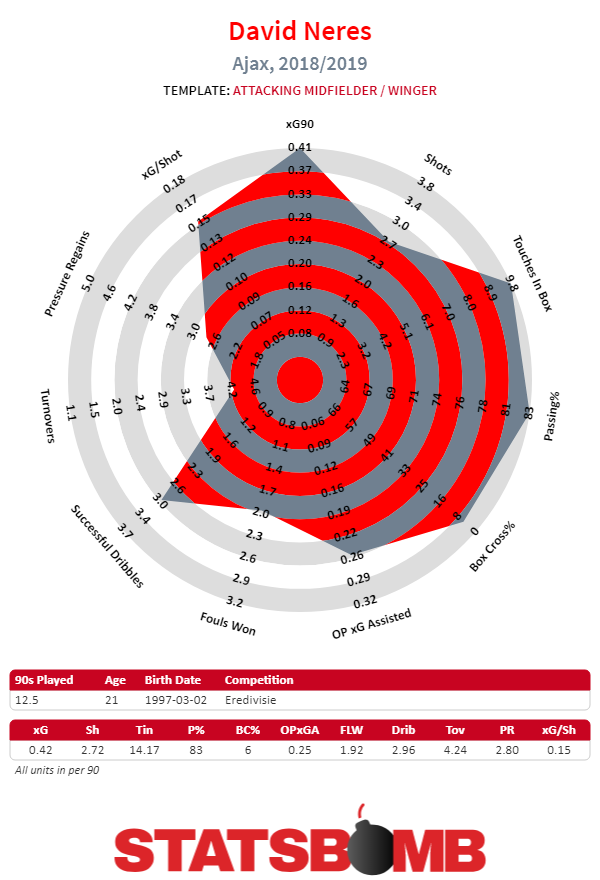
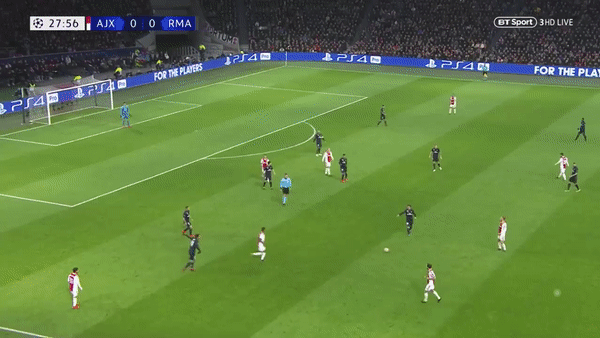
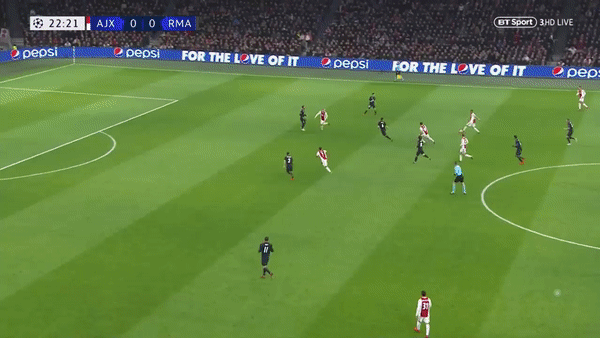 As it was last season, Neres's biggest appeal is that he has the type of coordination on-ball that you see from very few attacking talents. He's able to thread a pass between defenders and get the ball into dangerous spots with regularity. One can nitpick and say he's largely doing this against Eredivisie competition, but I'm pretty confident he'll be above average with his forward passing and overall chance creation even though the majority of them come from his left foot.
As it was last season, Neres's biggest appeal is that he has the type of coordination on-ball that you see from very few attacking talents. He's able to thread a pass between defenders and get the ball into dangerous spots with regularity. One can nitpick and say he's largely doing this against Eredivisie competition, but I'm pretty confident he'll be above average with his forward passing and overall chance creation even though the majority of them come from his left foot. 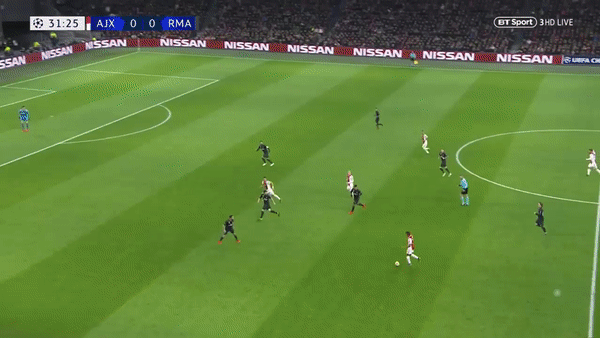 Neres is one of those young players who you don't have to worry about reigning in shot selection or wondering whether he'll waste possessions settling for low quality shots. He has about as clean a shot map as one could hope for from a young talent, and he provides value in that respect because it's not too often that you find 18-21 year old attackers who take shots at an average expected goal per shot value of 0.16. His judicious shot selection is a byproduct of a couple of things: he plays on one of the two major clubs in the Netherlands and that can skew numbers in a positive manner for players. Also, he is very hesitant to taking shots with his right foot so you end up cutting out potential shots from cutting inwards off the left wing, the type of shot that is a staple of wide attacking talents.
Neres is one of those young players who you don't have to worry about reigning in shot selection or wondering whether he'll waste possessions settling for low quality shots. He has about as clean a shot map as one could hope for from a young talent, and he provides value in that respect because it's not too often that you find 18-21 year old attackers who take shots at an average expected goal per shot value of 0.16. His judicious shot selection is a byproduct of a couple of things: he plays on one of the two major clubs in the Netherlands and that can skew numbers in a positive manner for players. Also, he is very hesitant to taking shots with his right foot so you end up cutting out potential shots from cutting inwards off the left wing, the type of shot that is a staple of wide attacking talents. 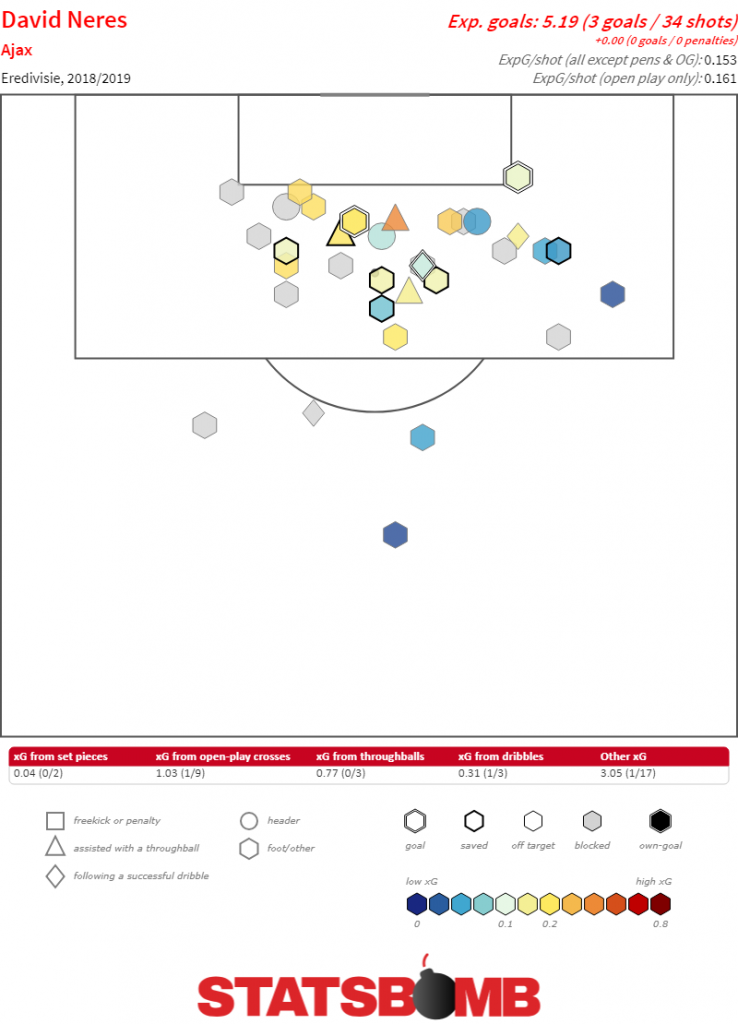 That reluctance to use his right foot is a key trait with Neres. It's not breaking ground to suggest that players are more likely to favor one foot than the other, and it's rare to find players like Ousmane Dembele who bring legitimate value by being both confident as a two-footed player and actually having the results to back it up (Justin Kluivert is an example of someone that has the confidence but more erratic results). But Neres is an extreme case and closer to being an outlier type in terms of dependence on his favored foot, even with the glimpses of decent right footed passes that you'll see from him. This isn't necessarily the worst thing in the world because he's got such a quality left foot to help compensate, but you'll see this flare up every now and then in a stark manner.
That reluctance to use his right foot is a key trait with Neres. It's not breaking ground to suggest that players are more likely to favor one foot than the other, and it's rare to find players like Ousmane Dembele who bring legitimate value by being both confident as a two-footed player and actually having the results to back it up (Justin Kluivert is an example of someone that has the confidence but more erratic results). But Neres is an extreme case and closer to being an outlier type in terms of dependence on his favored foot, even with the glimpses of decent right footed passes that you'll see from him. This isn't necessarily the worst thing in the world because he's got such a quality left foot to help compensate, but you'll see this flare up every now and then in a stark manner. 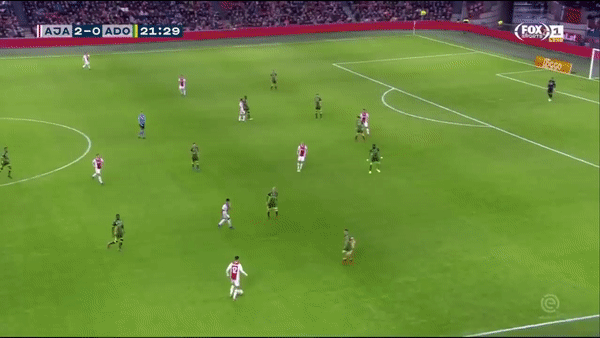 If there's one play that crystallizes both the good and bad with Neres as a young talent, it would be this one. The good is that there are a lot of players who would receive the ball in this position and then turn and take a speculative shot, which is a waste of a possession. The bad part is that there's an opportunity to carry the ball into the right side of the box for perhaps an individual shooting chance or a cutback for a teammate, the latter being a somewhat decent possibility because the team has a man advantage in the box. Someone who was a higher caliber athlete would've bet on himself to beat his man off the dribble and get to his spot. Given that he's going up against Eredivisie defenses, which aren't exactly renown for being stout, these instances help reinforce the notion that Neres will have trouble with his athleticism on-ball outside of the Ajax cocoon.
If there's one play that crystallizes both the good and bad with Neres as a young talent, it would be this one. The good is that there are a lot of players who would receive the ball in this position and then turn and take a speculative shot, which is a waste of a possession. The bad part is that there's an opportunity to carry the ball into the right side of the box for perhaps an individual shooting chance or a cutback for a teammate, the latter being a somewhat decent possibility because the team has a man advantage in the box. Someone who was a higher caliber athlete would've bet on himself to beat his man off the dribble and get to his spot. Given that he's going up against Eredivisie defenses, which aren't exactly renown for being stout, these instances help reinforce the notion that Neres will have trouble with his athleticism on-ball outside of the Ajax cocoon. 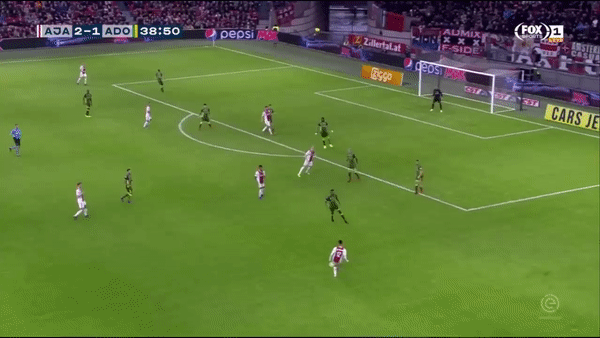 To a large extent, the conflicting feelings that I had a year ago with David Neres still persist when trying to think of his potential ceiling outcomes. You want to fall in love with him as a player because of parts of his skillset. He is an elite athlete off-ball and combines that with good timing for his runs, and this could be an x-factor for him being a huge success at his next club if utilized properly. I think he has good spatial awareness and is able to handle himself well during combination. Combine all that with very high level touch on his passing, and you've already covered a lot of what teams would want in a young wide player. And yet while he's generally good as a dribbler along with having very good shiftiness, another season has shown Neres to be overwhelmed at times when isolated against even mediocre defenders, along with being almost entirely dependent on his left foot. The good outweighs the bad with Neres and in a optimal environment, he could be a big time star, but clubs that are scouting him can't simply think of him as someone with such an overwhelming skillset that he'll be a unambiguous success in many situations. It's generally acknowledged that going to the right club is important for the developmental paths of young talents. With Neres, it's going to be especially important for him to find the perfect mix of squad and system fit given what he can and can't do. The good thing with Neres playing on Ajax and the team's success in Europe this season is that the worst club you could realistically expect for him to go to in the future would be ones who are on the outside looking in for Champions League spots (Arsenal being an example), but those clubs would have to ably replicate the setup Ajax have with their collective passing as a team to justify the high price tag that will come with a future Neres transfer. It's an interesting thought exercise to try and make player comparisons with Neres to visualize how he might fare outside of Ajax. Riyad Mahrez is an example of someone who like Neres has amazing technique with his left foot and broadly wouldn't be considered an overwhelming athlete, but along with having greater spontaneity in his dribbling, he's also better with right foot. Mahrez, during his absolute peak in 2015-16, was ruining defenders off the dribble and we've not seen that with Neres yet. Perhaps current day Erik Lamela (without the defensive value) is a better representation of how Neres is more likely to profile: being able to be an upper tier xG contributor without necessarily being an elite off the dribble threat (in the case of Lamela, that's more due to past injuries).
To a large extent, the conflicting feelings that I had a year ago with David Neres still persist when trying to think of his potential ceiling outcomes. You want to fall in love with him as a player because of parts of his skillset. He is an elite athlete off-ball and combines that with good timing for his runs, and this could be an x-factor for him being a huge success at his next club if utilized properly. I think he has good spatial awareness and is able to handle himself well during combination. Combine all that with very high level touch on his passing, and you've already covered a lot of what teams would want in a young wide player. And yet while he's generally good as a dribbler along with having very good shiftiness, another season has shown Neres to be overwhelmed at times when isolated against even mediocre defenders, along with being almost entirely dependent on his left foot. The good outweighs the bad with Neres and in a optimal environment, he could be a big time star, but clubs that are scouting him can't simply think of him as someone with such an overwhelming skillset that he'll be a unambiguous success in many situations. It's generally acknowledged that going to the right club is important for the developmental paths of young talents. With Neres, it's going to be especially important for him to find the perfect mix of squad and system fit given what he can and can't do. The good thing with Neres playing on Ajax and the team's success in Europe this season is that the worst club you could realistically expect for him to go to in the future would be ones who are on the outside looking in for Champions League spots (Arsenal being an example), but those clubs would have to ably replicate the setup Ajax have with their collective passing as a team to justify the high price tag that will come with a future Neres transfer. It's an interesting thought exercise to try and make player comparisons with Neres to visualize how he might fare outside of Ajax. Riyad Mahrez is an example of someone who like Neres has amazing technique with his left foot and broadly wouldn't be considered an overwhelming athlete, but along with having greater spontaneity in his dribbling, he's also better with right foot. Mahrez, during his absolute peak in 2015-16, was ruining defenders off the dribble and we've not seen that with Neres yet. Perhaps current day Erik Lamela (without the defensive value) is a better representation of how Neres is more likely to profile: being able to be an upper tier xG contributor without necessarily being an elite off the dribble threat (in the case of Lamela, that's more due to past injuries). 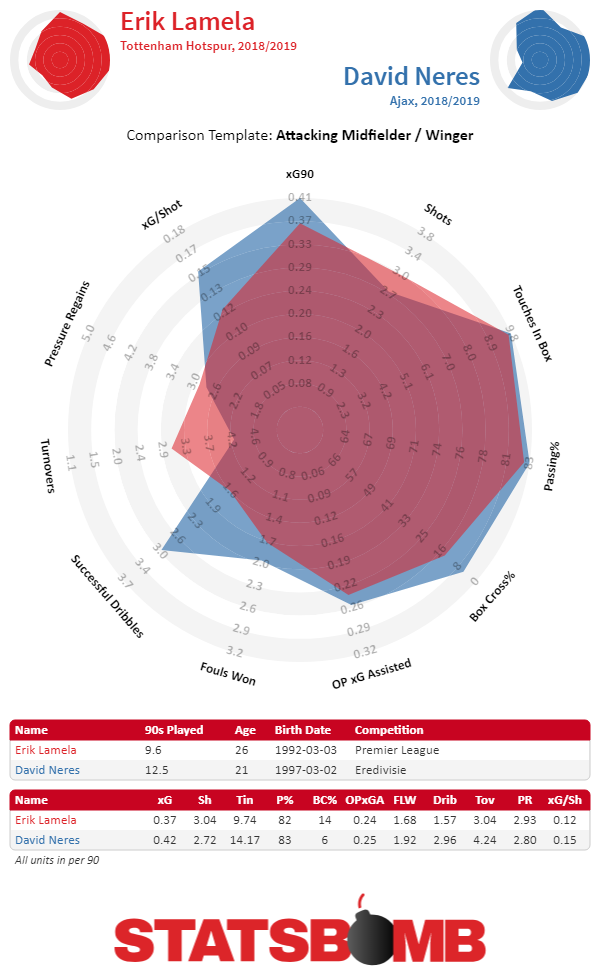 Whoever ends up being David Neres' next club after Ajax, whether that transfer occurs next summer or beyond that, will have to juggle all the factors mentioned previously along with even further extensive scouting before deciding on whether they're confident on him being a future star. Seeing as he's tied down to a contract until 2022 with Champions League money coming in this season for Ajax (not to mention a big fat Frenkie De Jong transfer fee), it would stand to reason that Neres' future fee will not come cheap. I am on the more skeptical end of the spectrum when it comes to Neres, and while I don't suspect he'll be a bust in a tougher league, I am more confident in Steven Bergwijn being a star talent outside the Eredivisie than I am with Neres. This could end up being entirely off the mark and Neres ends up being a stud, but he's the type of young Eredivisie talent where it's fair to be more skeptical of despite the gaudy statistical profile.
Whoever ends up being David Neres' next club after Ajax, whether that transfer occurs next summer or beyond that, will have to juggle all the factors mentioned previously along with even further extensive scouting before deciding on whether they're confident on him being a future star. Seeing as he's tied down to a contract until 2022 with Champions League money coming in this season for Ajax (not to mention a big fat Frenkie De Jong transfer fee), it would stand to reason that Neres' future fee will not come cheap. I am on the more skeptical end of the spectrum when it comes to Neres, and while I don't suspect he'll be a bust in a tougher league, I am more confident in Steven Bergwijn being a star talent outside the Eredivisie than I am with Neres. This could end up being entirely off the mark and Neres ends up being a stud, but he's the type of young Eredivisie talent where it's fair to be more skeptical of despite the gaudy statistical profile.


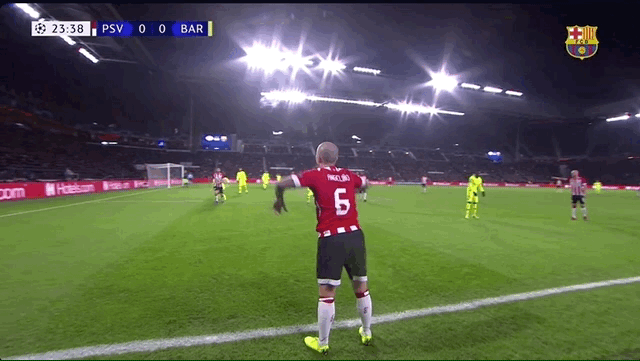
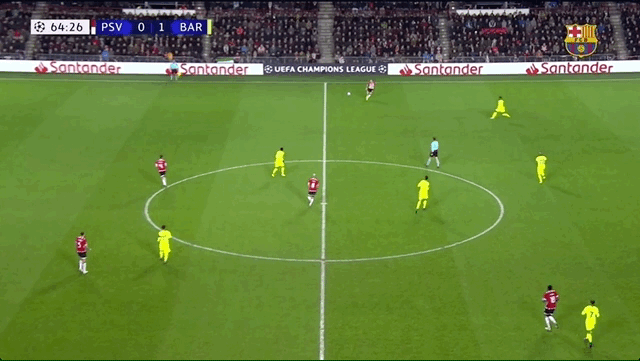
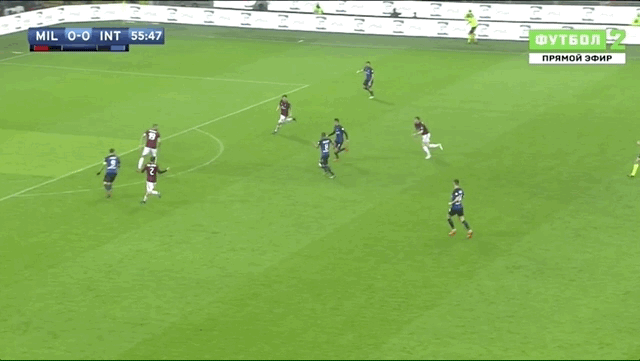



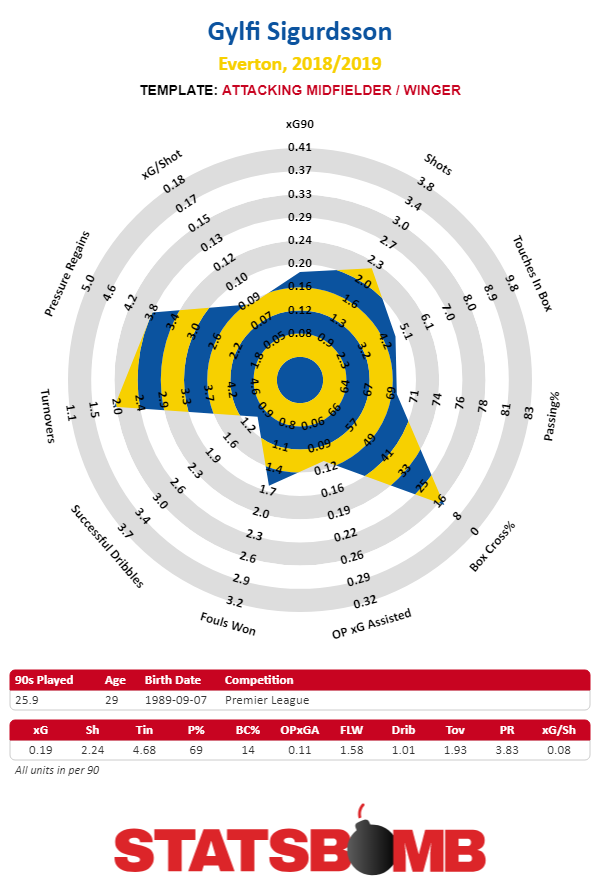
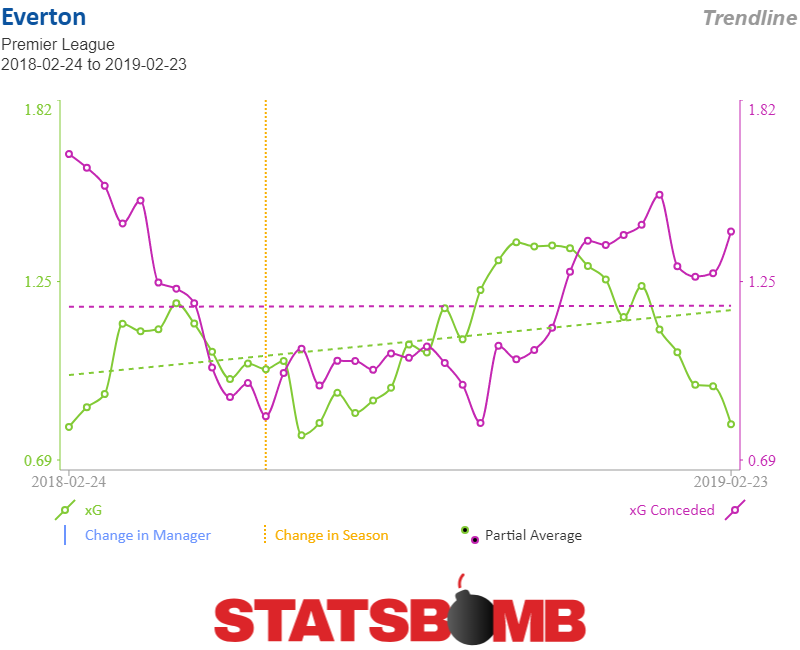
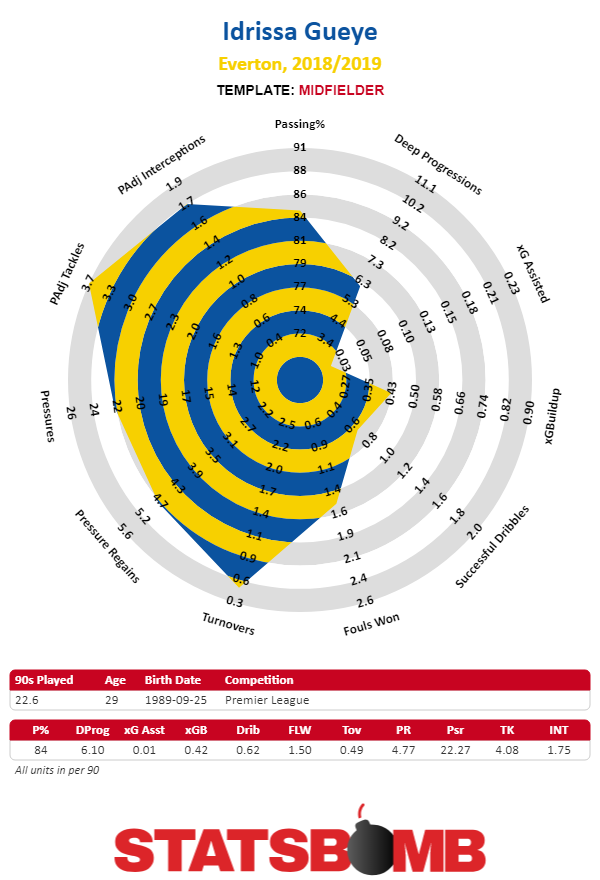
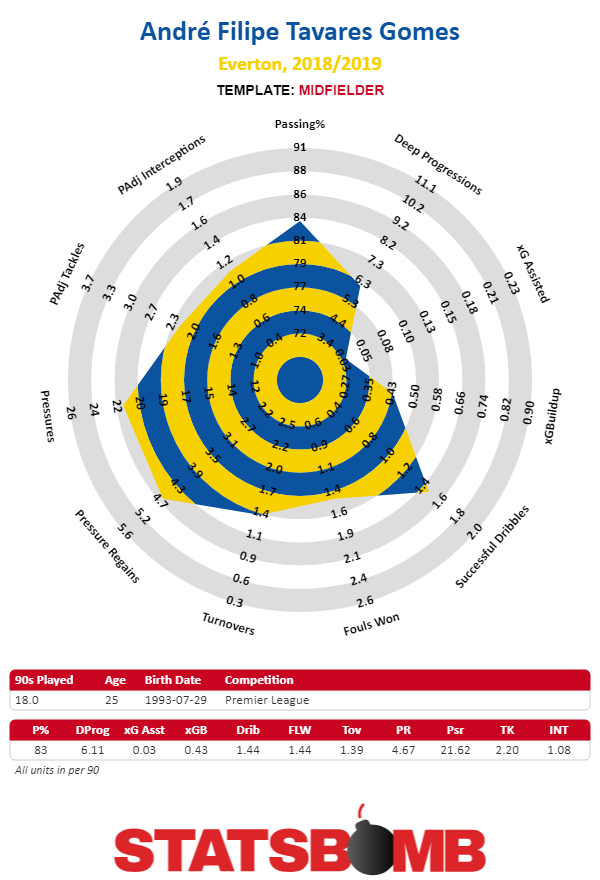
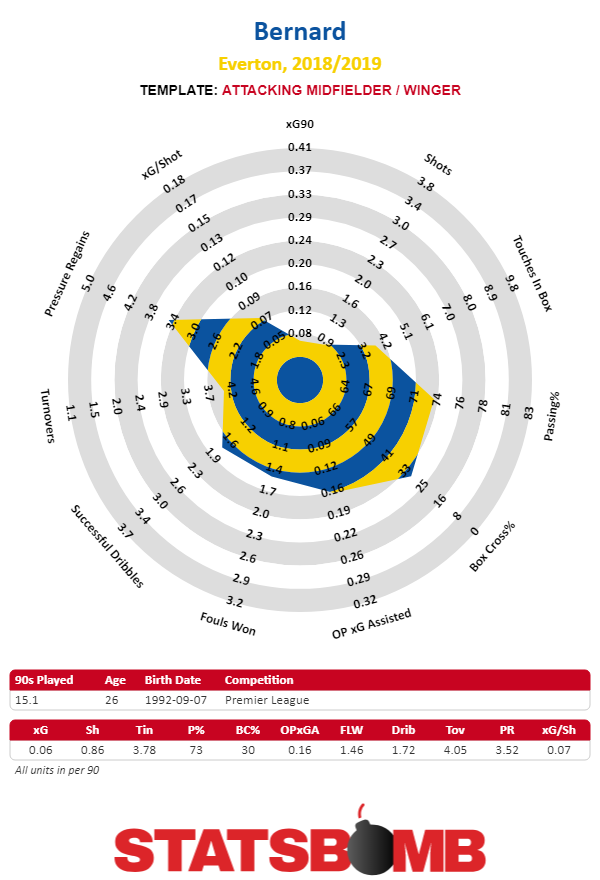
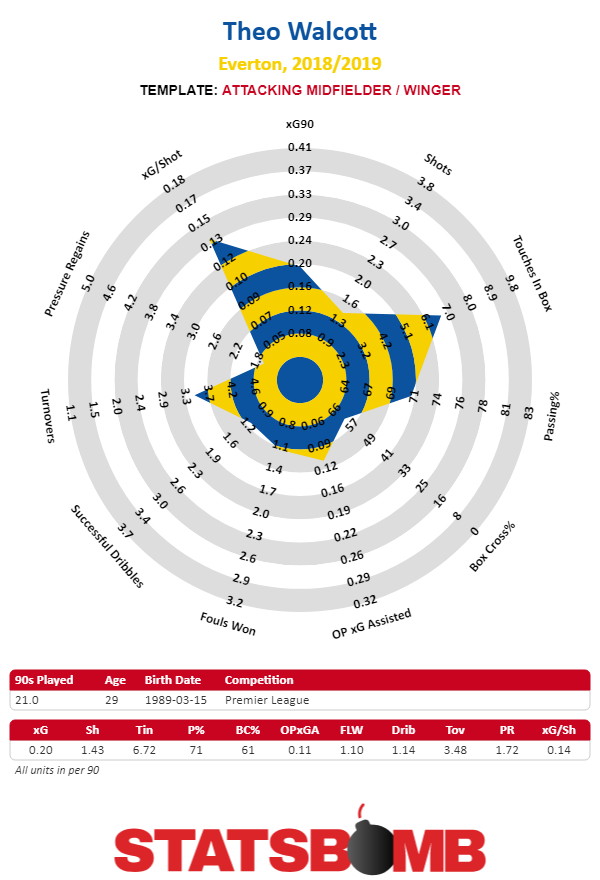
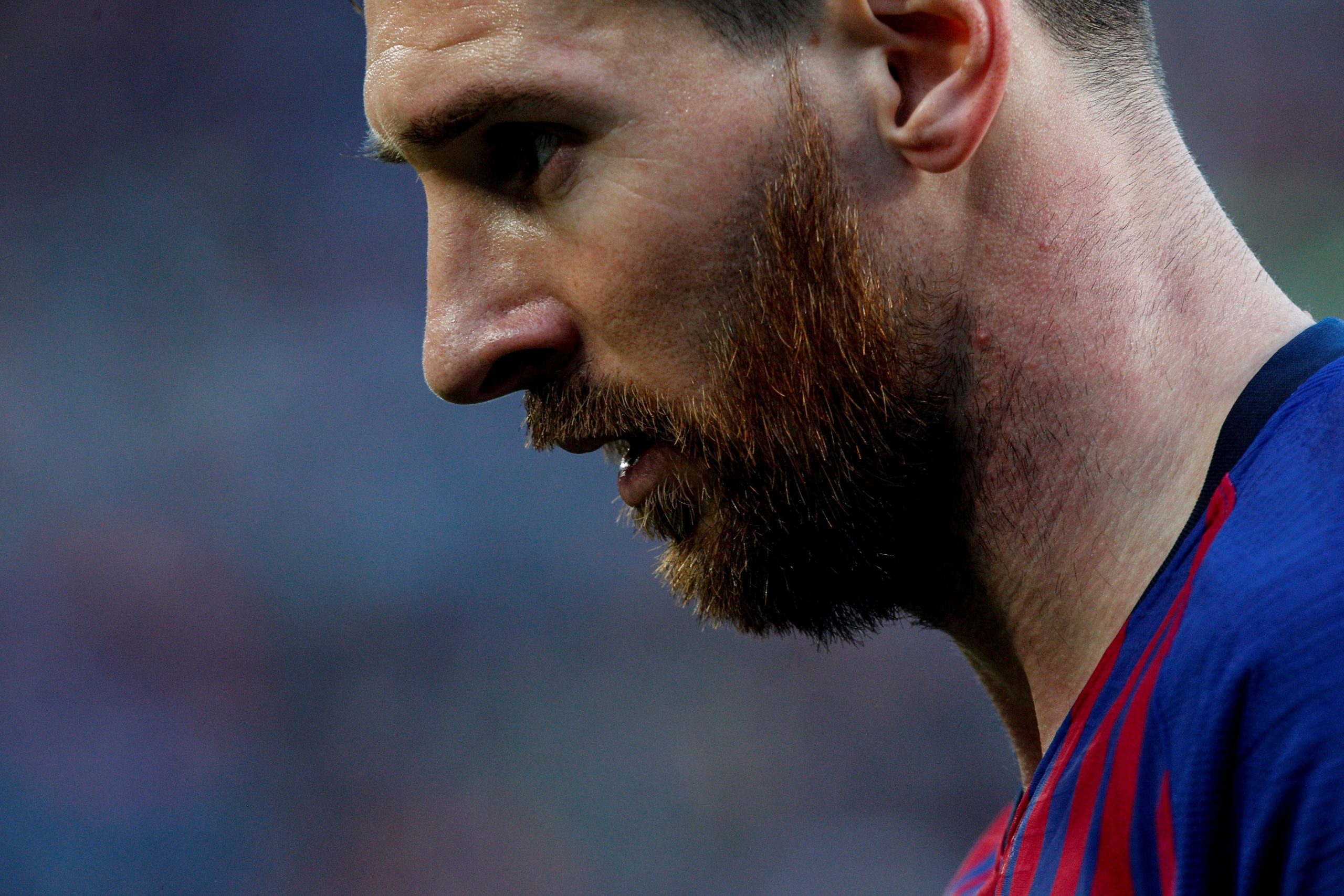
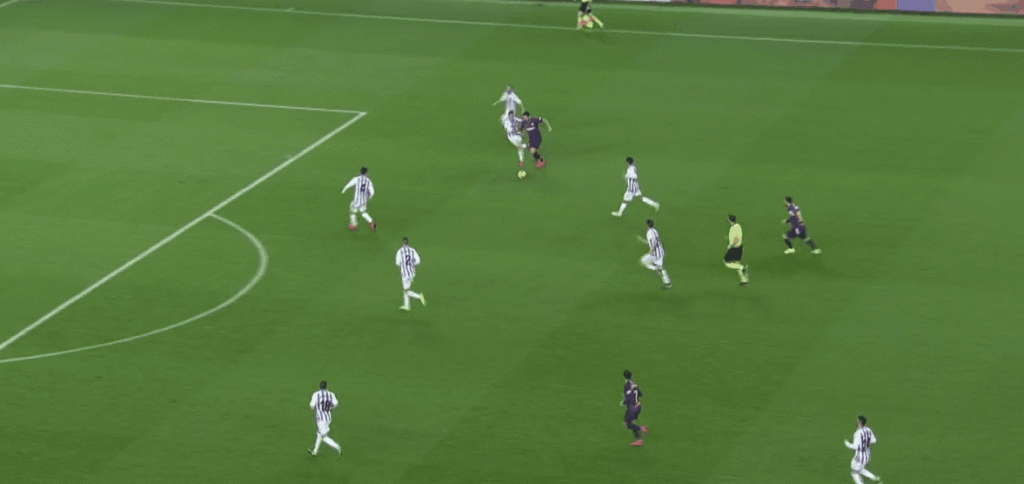
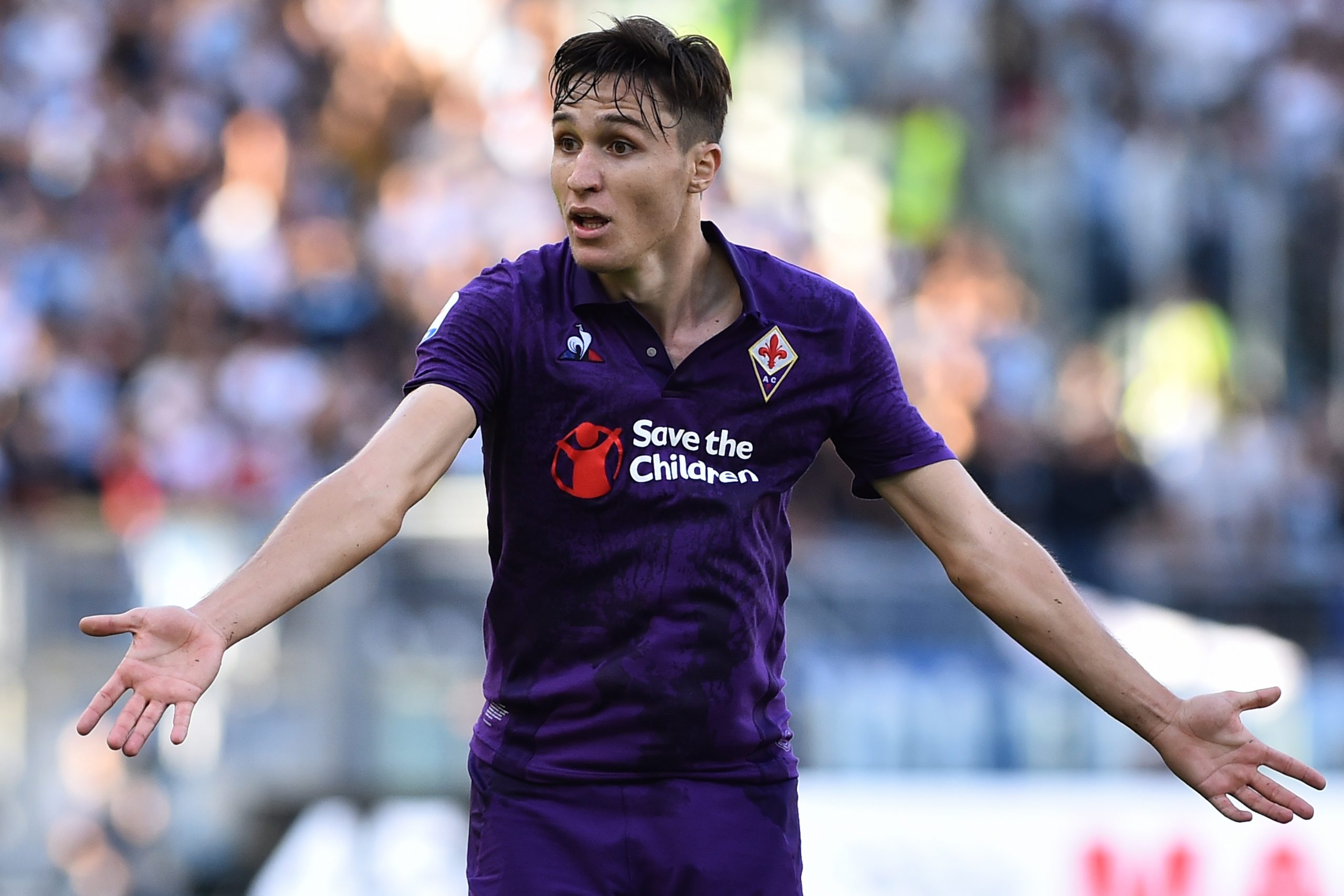
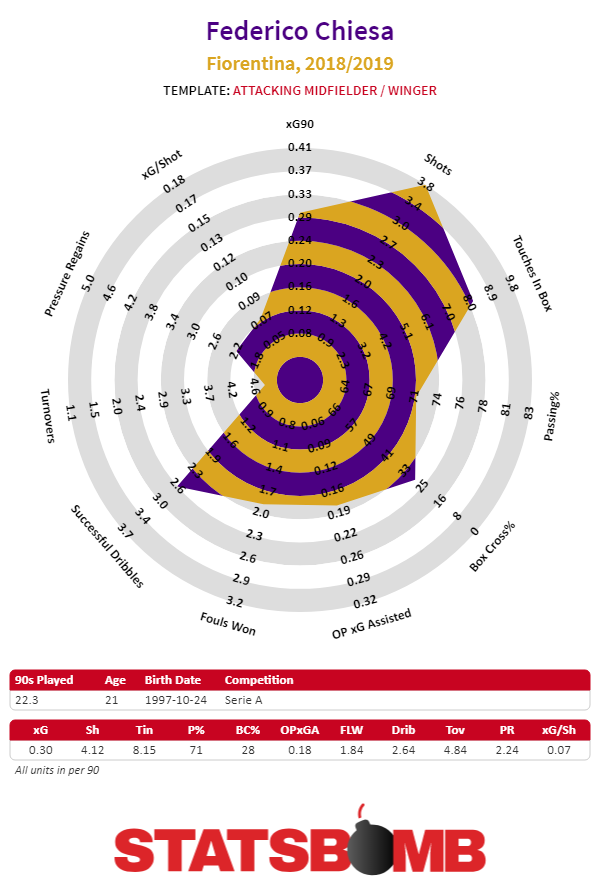
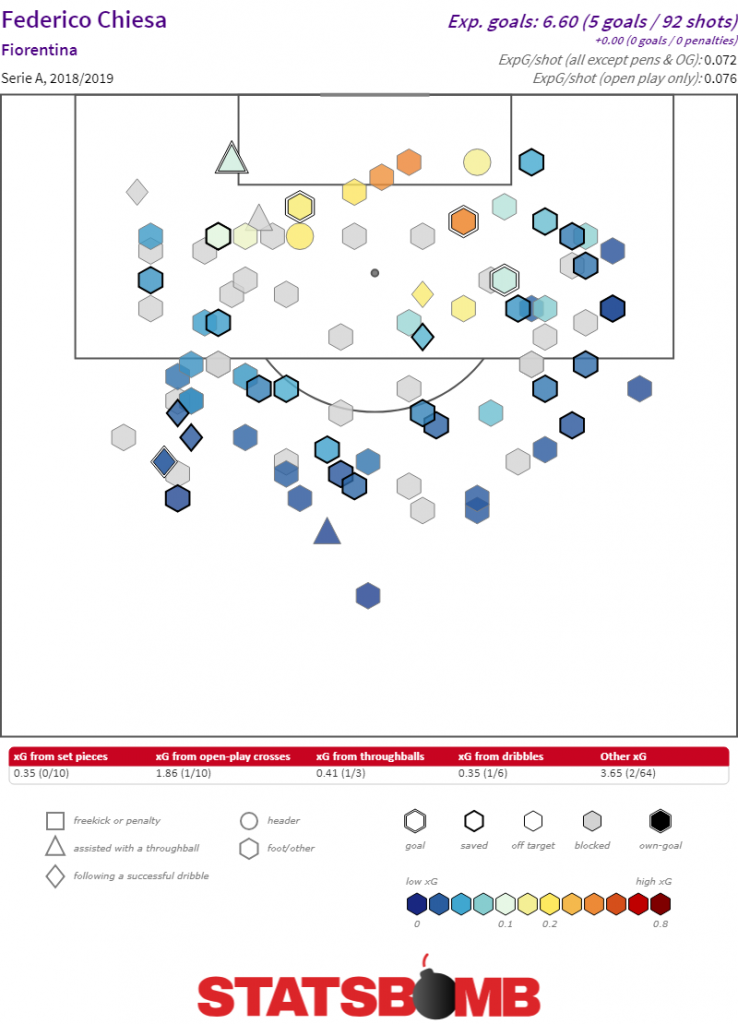
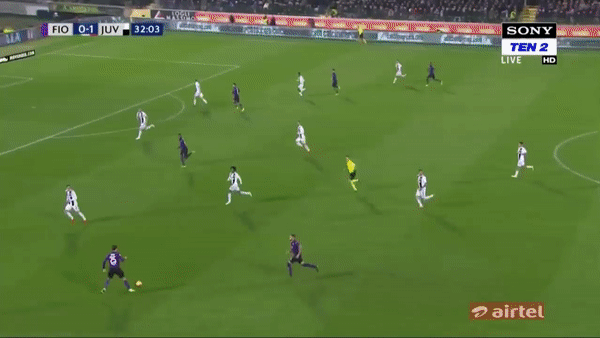

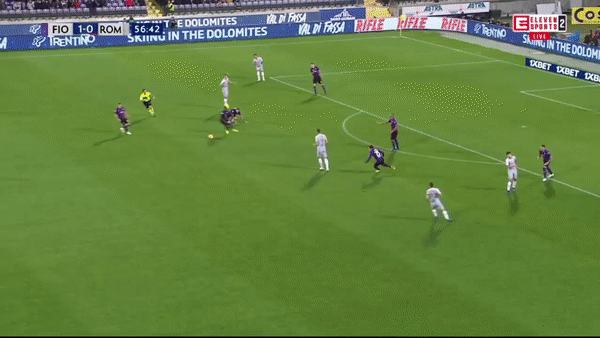
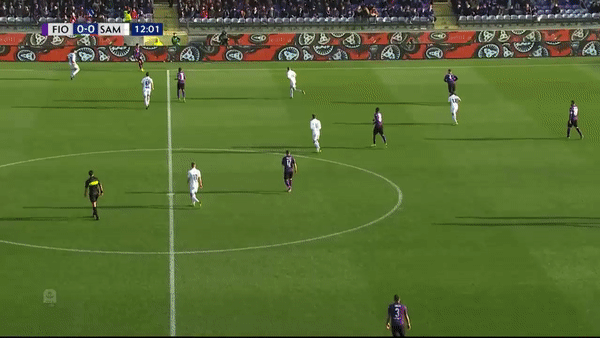
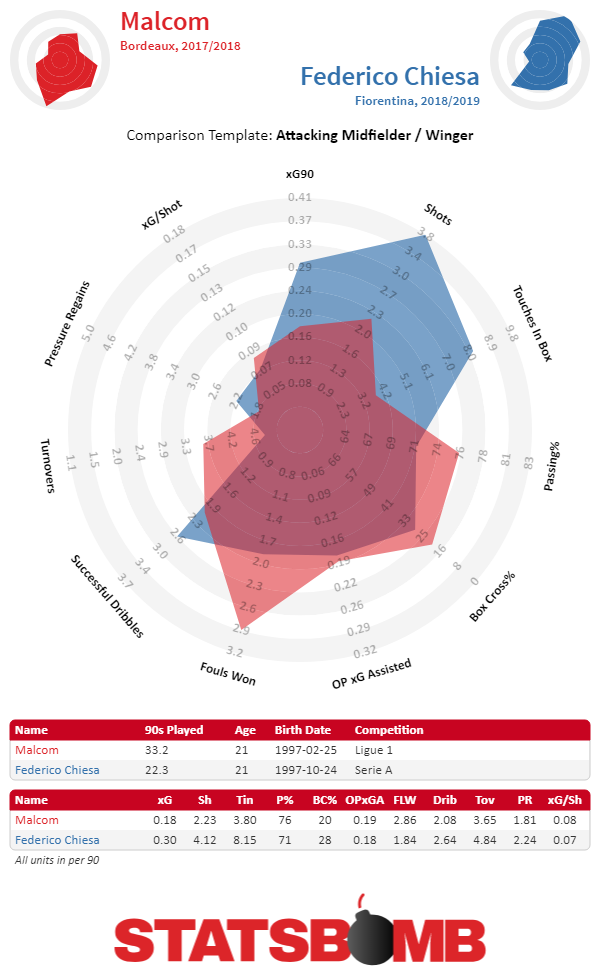 Malcom serves as a bit of a cautionary tale for Chiesa. While Malcom was good enough that bigger clubs around Europe were wise to think hard about acquiring him last summer, there was nothing to suggest that he was ready make the leap to a superclub like Barcelona and get consistent game time, and now it looks like he's going to lose an entire year of development as a result. Young talents in general need ample minutes for their development, and that especially applies to prominent youngsters like Malcom or Ruben Loftus-Cheek as another example. Chiesa would be best off finding a CL level side that he could feel reasonably confident in getting at least 1500 league minutes in a season. There have been reports that Chiesa's future transfer fee will be upwards of £60m, which would be a rather staggering amount for a young player that's a net positive contributor but not necessarily one that's shown to be an unambiguous star talent. Paying close to that fee as a club would be betting that there's a fully realized version waiting to come to the surface, that his shot selection will get better over time. Everton's acquisition of Richarlison last summer was an example of a club spending a premium on a young talent that they judged to be a future star, and to this point that transfer looks to be more of a mixed bag than an undeniable success. While Chiesa is perhaps better than Richarlison, spending £60m or more on him would come with similar downside risk. The outline of a star player is there with Federico Chiesa, whether that turns into something more substantive is anyone's guess. Header image courtesy of the Press Association
Malcom serves as a bit of a cautionary tale for Chiesa. While Malcom was good enough that bigger clubs around Europe were wise to think hard about acquiring him last summer, there was nothing to suggest that he was ready make the leap to a superclub like Barcelona and get consistent game time, and now it looks like he's going to lose an entire year of development as a result. Young talents in general need ample minutes for their development, and that especially applies to prominent youngsters like Malcom or Ruben Loftus-Cheek as another example. Chiesa would be best off finding a CL level side that he could feel reasonably confident in getting at least 1500 league minutes in a season. There have been reports that Chiesa's future transfer fee will be upwards of £60m, which would be a rather staggering amount for a young player that's a net positive contributor but not necessarily one that's shown to be an unambiguous star talent. Paying close to that fee as a club would be betting that there's a fully realized version waiting to come to the surface, that his shot selection will get better over time. Everton's acquisition of Richarlison last summer was an example of a club spending a premium on a young talent that they judged to be a future star, and to this point that transfer looks to be more of a mixed bag than an undeniable success. While Chiesa is perhaps better than Richarlison, spending £60m or more on him would come with similar downside risk. The outline of a star player is there with Federico Chiesa, whether that turns into something more substantive is anyone's guess. Header image courtesy of the Press Association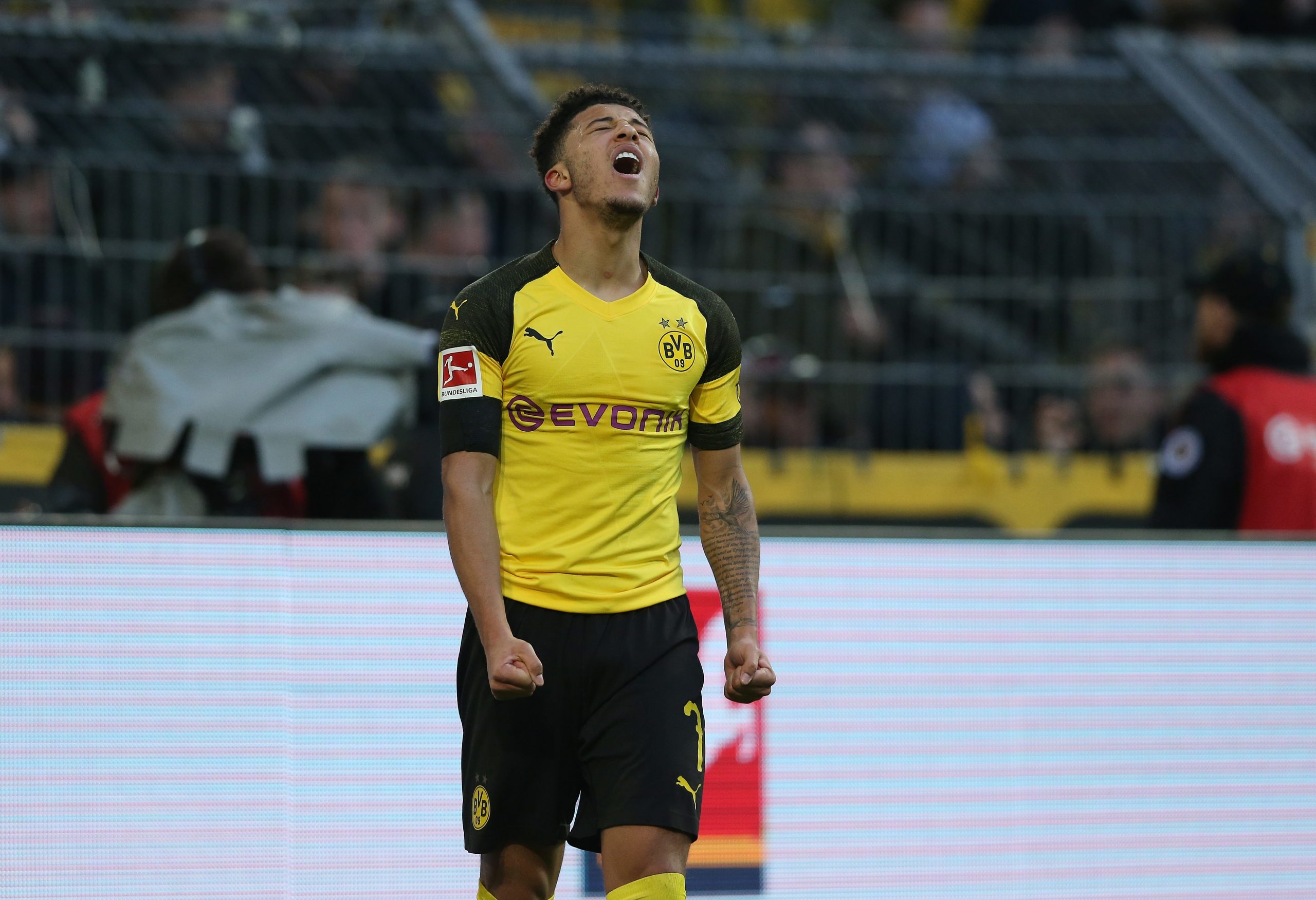

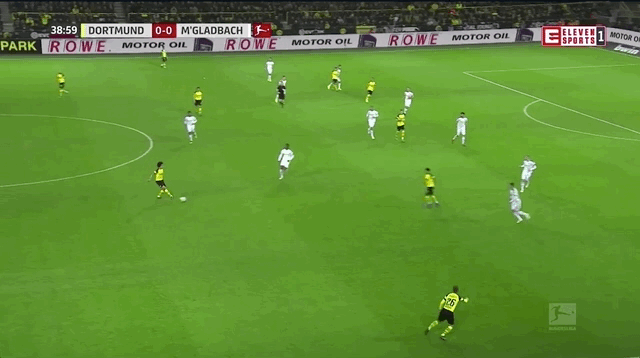
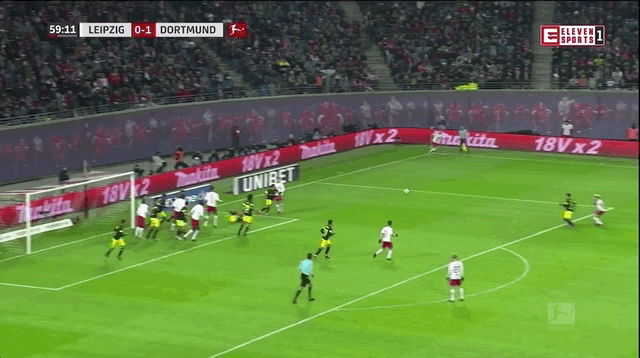
 “Players on the ball have two options,” Lancaster said. “They have the soft option and the hard option. We always try and encourage players to get the ball and face the player up. So, you might receive it so you are facing the defender immediately, which is great, you can go one-on-one. Or if your back is towards the defender, sometimes people just take the soft option and pass it back. Jadon wasn’t happy with that. It was turn and go at this player... If he did turn, and he did attack, that was helping us defensively. He’s now progressed the ball 20 yards up the pitch. If he loses it 20 yards up the pitch, we’re 20 yards further from our goal. So it was all complementary in transitional phases.”
“Players on the ball have two options,” Lancaster said. “They have the soft option and the hard option. We always try and encourage players to get the ball and face the player up. So, you might receive it so you are facing the defender immediately, which is great, you can go one-on-one. Or if your back is towards the defender, sometimes people just take the soft option and pass it back. Jadon wasn’t happy with that. It was turn and go at this player... If he did turn, and he did attack, that was helping us defensively. He’s now progressed the ball 20 yards up the pitch. If he loses it 20 yards up the pitch, we’re 20 yards further from our goal. So it was all complementary in transitional phases.” 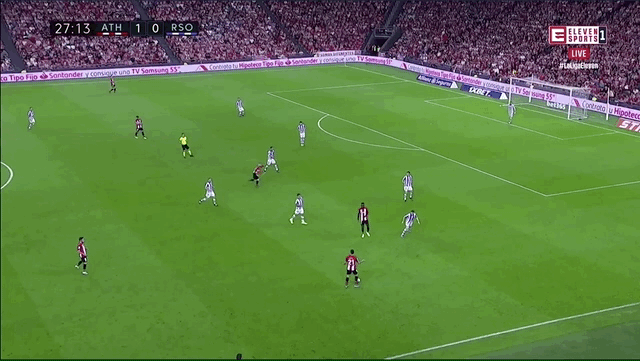
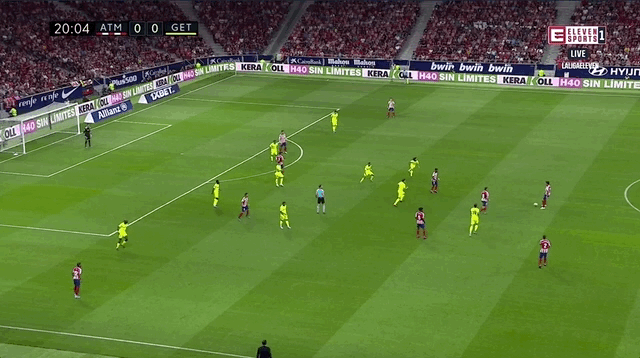
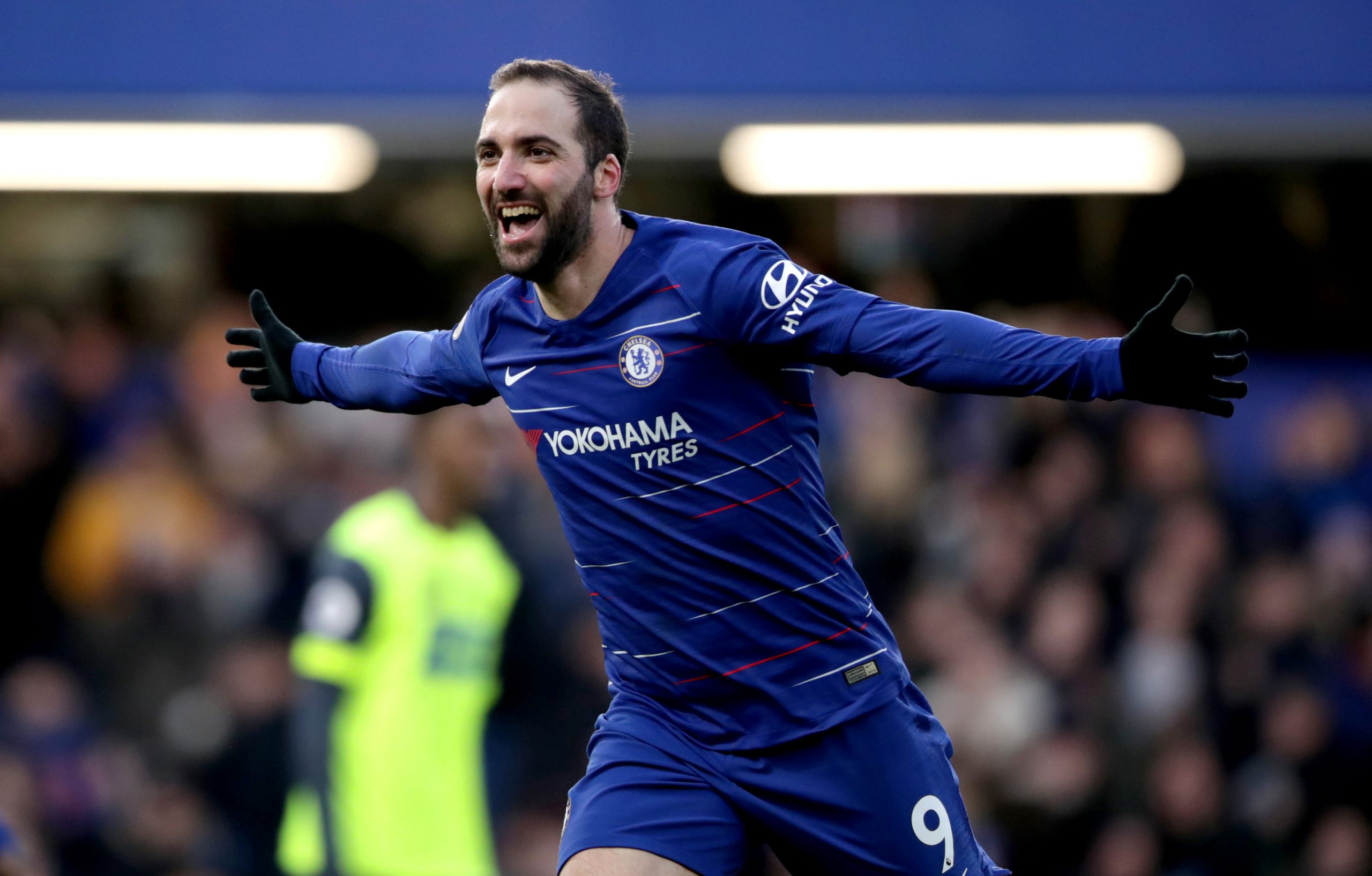
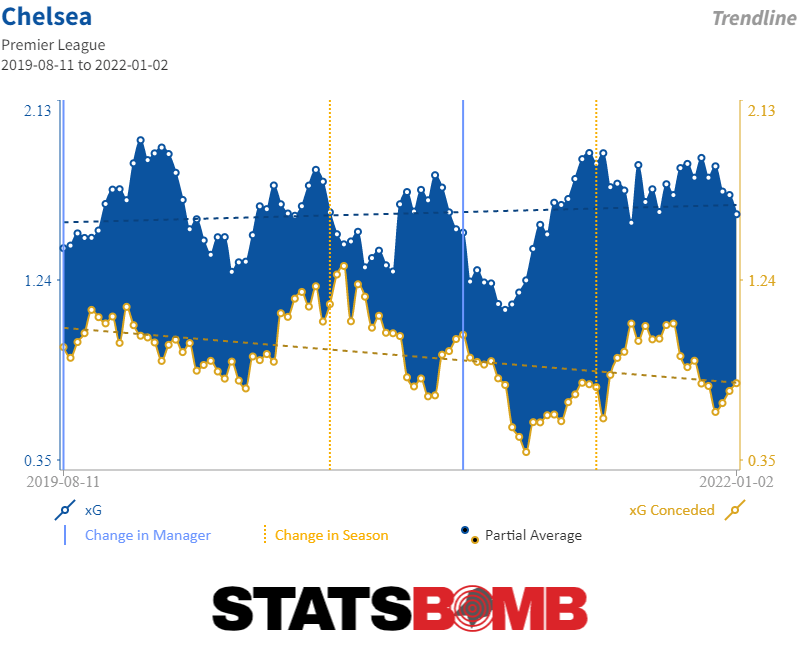
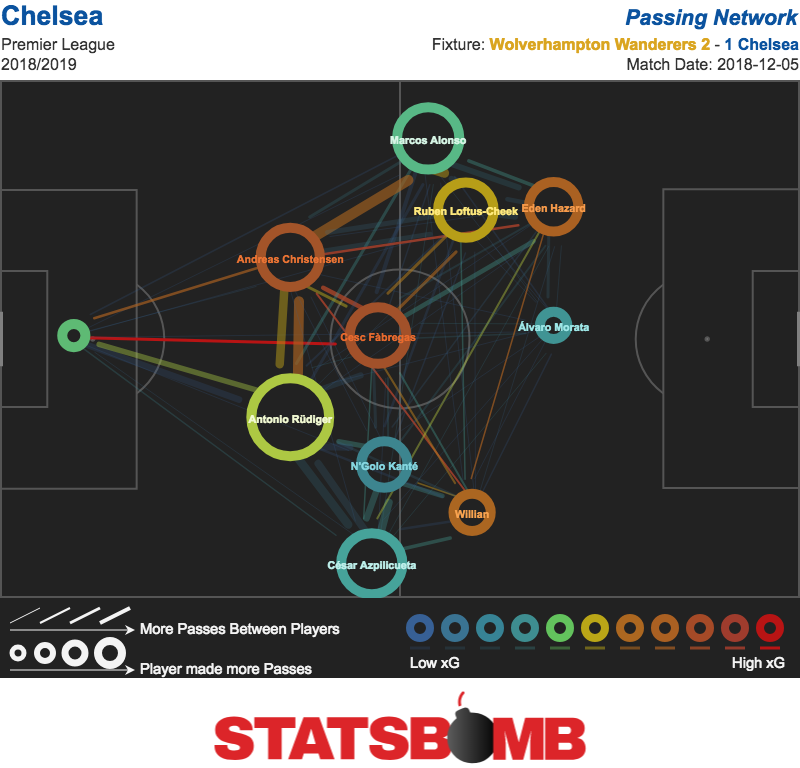

 Let’s be charitable for a second. Let’s say that Higuaín’s numbers declined at Juventus not due to what he was doing but because Massimiliano Allegri’s side are built to defend first and rely on the attack only when they really need it. And let’s say that his issues at Milan were about the Rossoneri being such a mess more than anything else. Thus Higuaín should be fine at 31 now that he’s playing attacking football under a manager who knows exactly how to use him. It’s a stretch, but one you have to believe completely to say this signing will work out.
Let’s be charitable for a second. Let’s say that Higuaín’s numbers declined at Juventus not due to what he was doing but because Massimiliano Allegri’s side are built to defend first and rely on the attack only when they really need it. And let’s say that his issues at Milan were about the Rossoneri being such a mess more than anything else. Thus Higuaín should be fine at 31 now that he’s playing attacking football under a manager who knows exactly how to use him. It’s a stretch, but one you have to believe completely to say this signing will work out. 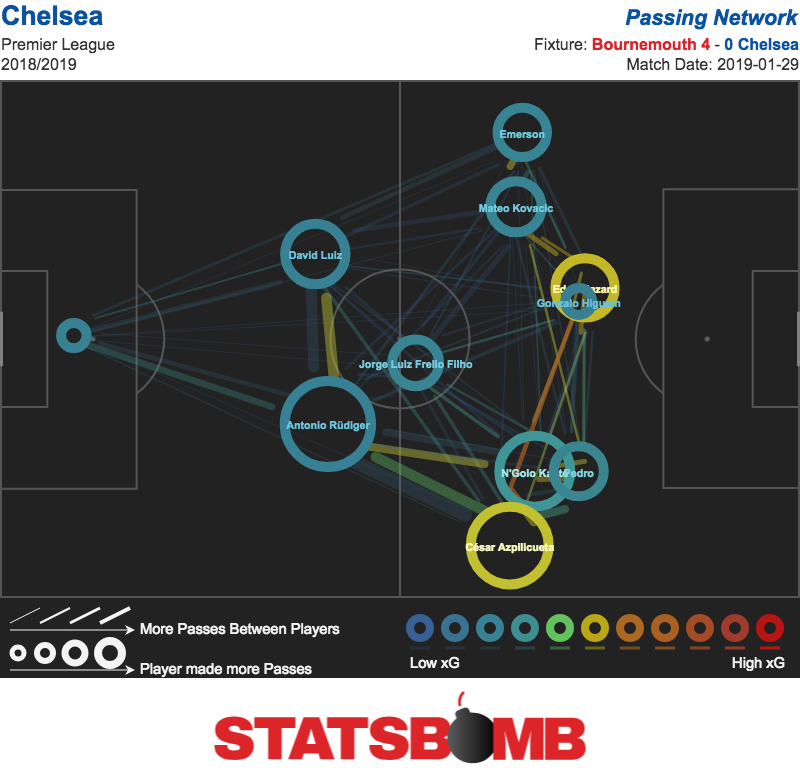
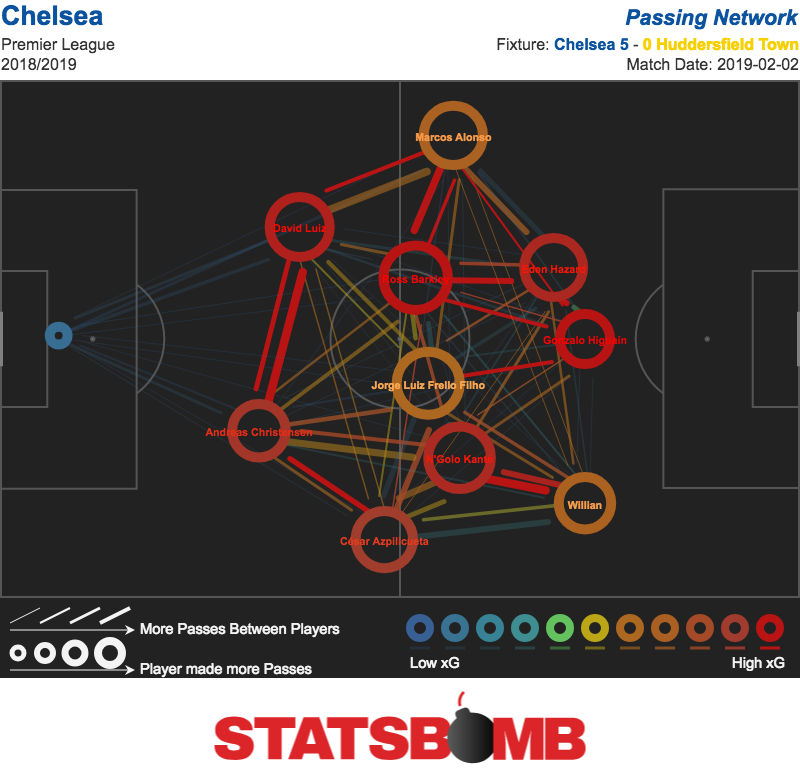
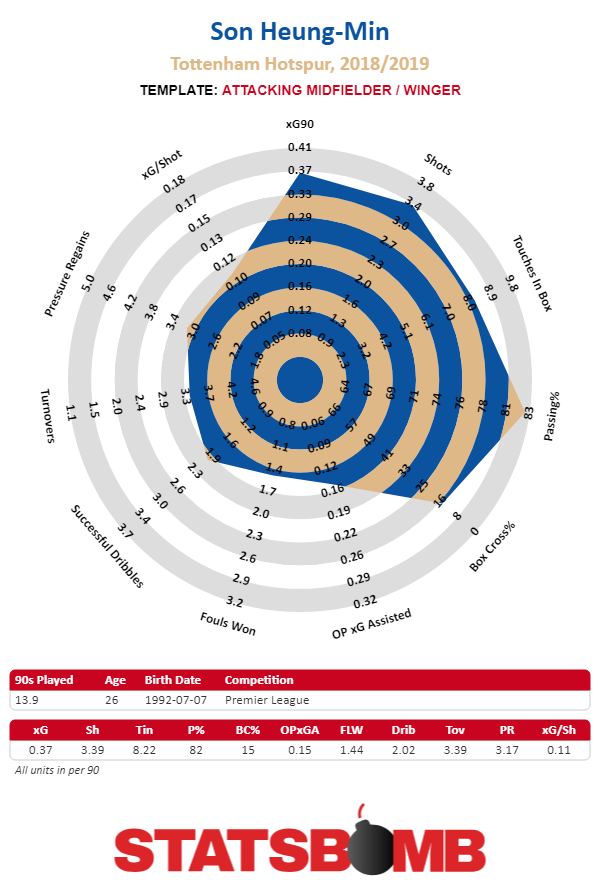
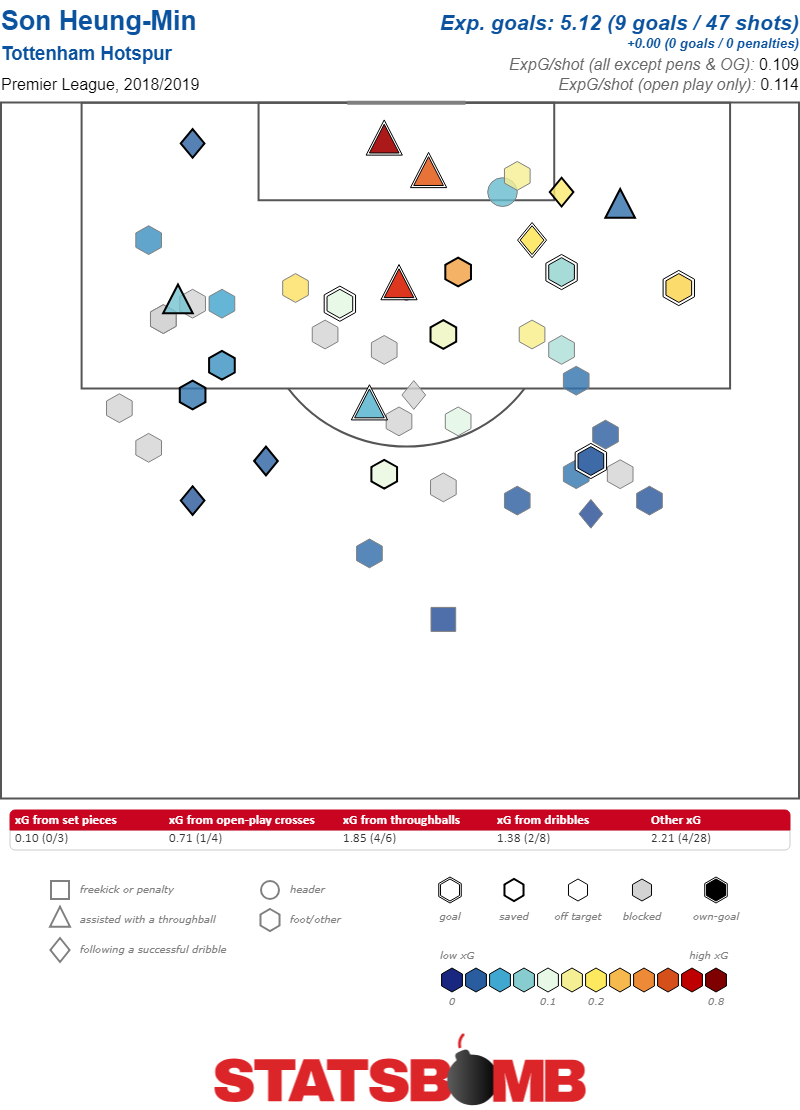 What Son has done, playing with Harry Kane, is take a roll that might have been thankless and turn it into an extremely productive one. Kane takes up the best central positions in the penalty box, and he’s excellent at it. Other attackers operating around a central striker are often left with mostly very low value scoring chances. Typically they can either feed the big man, or cut inside and take hopeful shots from distance. Son manages to both create a lot of these kinds of chances for himself, and upgrade their quality from hopeful potshots to above average goal scoring opportunities. In addition to Son’s scoring ability around the box, there’s also his ability to unsettle defenses with the ball at his feet. He’s completing two successful dribbles per match. There are vanishingly few players who create with the ball at their feet, and also manage to take a bunch of pretty good shots. Usually a player’s dribbling either happens far away from goal, indicating a player that won’t be getting into the box frequently, or results in bad shots for themselves or others. Beating players off the dribble is increasingly a skill deployed in build-up, rather than one in the final third. Son is one of only eight Premier League players who completes two dribbles per game, takes two shots and also manages to keep his xG per shot over 0.10. The others are Raheem Sterling, Leroy Sane, Sadio Mane, Pedro, Josh King, and West Ham’s wingers, Felipe Anderson and Michail Antonio. It’s an idiosyncratic list. And finally, Son is also careful with the ball. Despite being an attacker with lots of responsibilities he doesn’t turn it over much. He’s one of only twelve Premier League players that completes two dribbles per game while turning the ball over less than four times. He’s simply the complete package. What makes Son so attractive as a player is that he’s a little bit better at a lot of things than players who occupy a similar role. He gets a lot of shots, especially for somebody who isn’t the focal point of the attack and those shots are somewhat better on average than most attacking wingers. He does a lot of dribbling but manages not to be wasteful. This year all of that has resulted in a tremendous goal and assist return. But, even if the goals and assists drop back to a level supported by the underlying numbers, that still makes Son one of the best inside forwards in the Premier League. He should get treated that way.
What Son has done, playing with Harry Kane, is take a roll that might have been thankless and turn it into an extremely productive one. Kane takes up the best central positions in the penalty box, and he’s excellent at it. Other attackers operating around a central striker are often left with mostly very low value scoring chances. Typically they can either feed the big man, or cut inside and take hopeful shots from distance. Son manages to both create a lot of these kinds of chances for himself, and upgrade their quality from hopeful potshots to above average goal scoring opportunities. In addition to Son’s scoring ability around the box, there’s also his ability to unsettle defenses with the ball at his feet. He’s completing two successful dribbles per match. There are vanishingly few players who create with the ball at their feet, and also manage to take a bunch of pretty good shots. Usually a player’s dribbling either happens far away from goal, indicating a player that won’t be getting into the box frequently, or results in bad shots for themselves or others. Beating players off the dribble is increasingly a skill deployed in build-up, rather than one in the final third. Son is one of only eight Premier League players who completes two dribbles per game, takes two shots and also manages to keep his xG per shot over 0.10. The others are Raheem Sterling, Leroy Sane, Sadio Mane, Pedro, Josh King, and West Ham’s wingers, Felipe Anderson and Michail Antonio. It’s an idiosyncratic list. And finally, Son is also careful with the ball. Despite being an attacker with lots of responsibilities he doesn’t turn it over much. He’s one of only twelve Premier League players that completes two dribbles per game while turning the ball over less than four times. He’s simply the complete package. What makes Son so attractive as a player is that he’s a little bit better at a lot of things than players who occupy a similar role. He gets a lot of shots, especially for somebody who isn’t the focal point of the attack and those shots are somewhat better on average than most attacking wingers. He does a lot of dribbling but manages not to be wasteful. This year all of that has resulted in a tremendous goal and assist return. But, even if the goals and assists drop back to a level supported by the underlying numbers, that still makes Son one of the best inside forwards in the Premier League. He should get treated that way.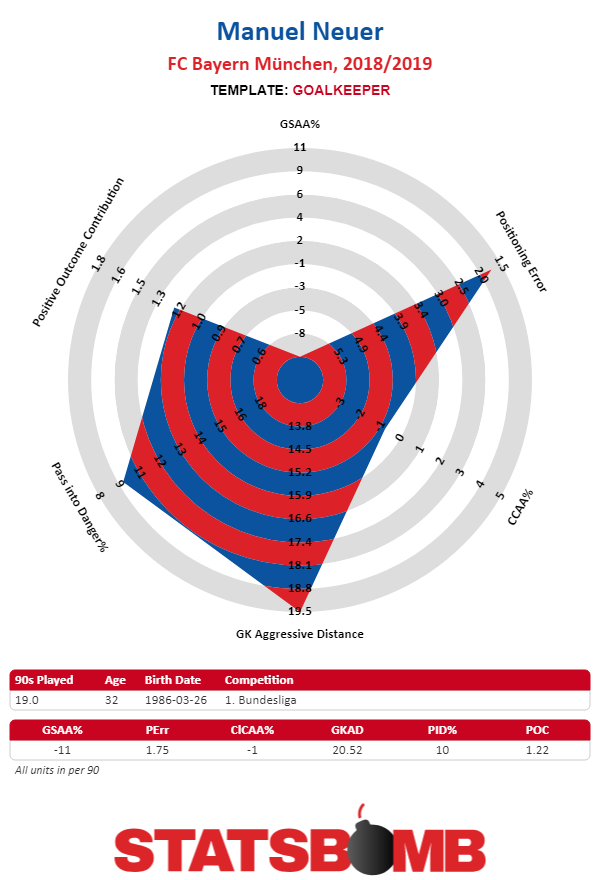
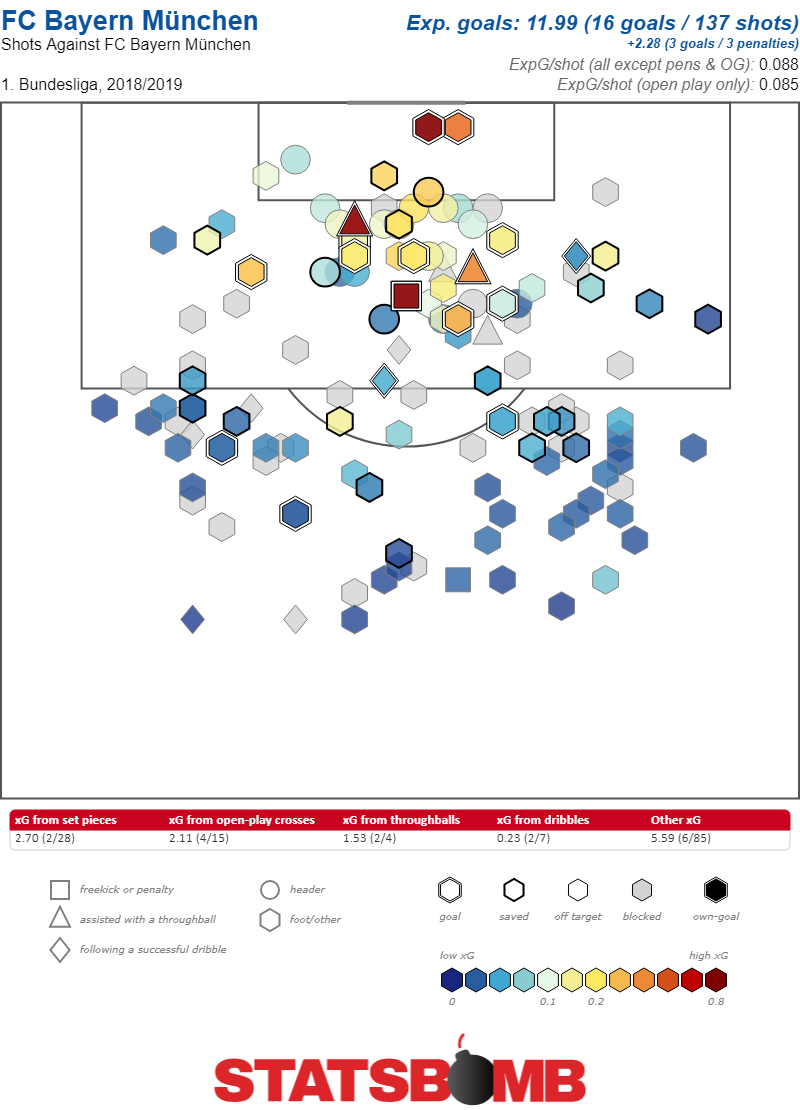 It is of course possible, that Neuer has simply run into a string off awful luck. That despite having a mediocre collection of shots, strikers just keep hitting the ball outstandingly and picking out corners in ways that Neuer couldn’t hope to stop. Except that post-shot xG suggests this isn’t the case. The post-shot value of the shots Neuer has faced is almost exactly the same. The model spits out 11.0 expected goals conceded from open play. Neuer has conceded 16.
It is of course possible, that Neuer has simply run into a string off awful luck. That despite having a mediocre collection of shots, strikers just keep hitting the ball outstandingly and picking out corners in ways that Neuer couldn’t hope to stop. Except that post-shot xG suggests this isn’t the case. The post-shot value of the shots Neuer has faced is almost exactly the same. The model spits out 11.0 expected goals conceded from open play. Neuer has conceded 16. 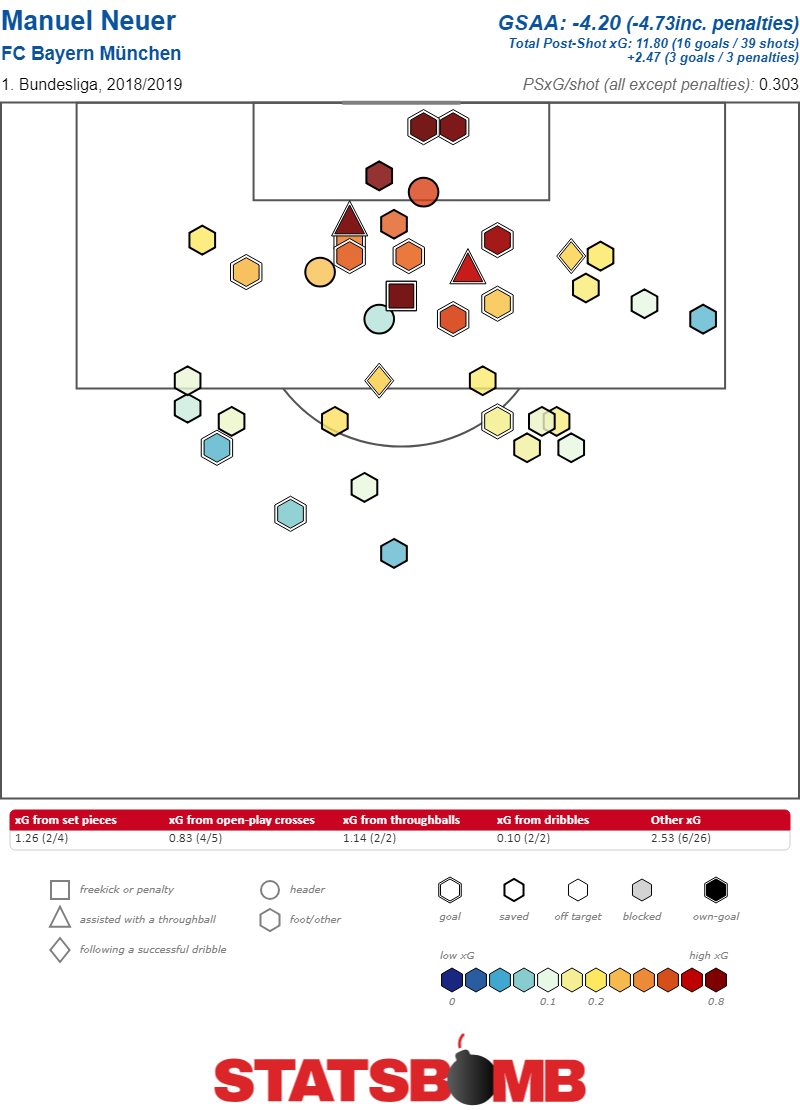 There is one interesting statistical wrinkle here. As the two charts show, relatively few of the shots that Bayern have given up have found their way on target, and of those that have, they’ve been mostly the most dangerous shots. The result is that despite the fairly innocuous profile of shots that Bayern have given up on the whole, the ones that Neuer has ended up facing have been quite dangerous. His job has been harder than it might seem at first glance. His expected save rate is only 69.7%. That’s the seventh lowest in the league. The problem is, that even when you adjust for all of that Neuer is still failing miserably. His save percentage is only 59%. Among first choice keepers that’s the second lowest total in the league. Worse, the difference between his save percentage, and his expected save percentage, that 10.7% gap, it’s also the second worst in Germany. There’s no way to sugar coat it. Neuer has just been bad. The fact that Bayern themselves are quite good has gone a long way to masking his performance. They’ve only conceded 19 total goals. Only two teams have conceded fewer, and they’re on 18. Bayern’s defensive record is close to the best in the league, so how bad could Neuer really be anchoring it? Well, when you graph goals conceded against the goals save above average percentage it becomes clear just how large an outlier Neuer is.
There is one interesting statistical wrinkle here. As the two charts show, relatively few of the shots that Bayern have given up have found their way on target, and of those that have, they’ve been mostly the most dangerous shots. The result is that despite the fairly innocuous profile of shots that Bayern have given up on the whole, the ones that Neuer has ended up facing have been quite dangerous. His job has been harder than it might seem at first glance. His expected save rate is only 69.7%. That’s the seventh lowest in the league. The problem is, that even when you adjust for all of that Neuer is still failing miserably. His save percentage is only 59%. Among first choice keepers that’s the second lowest total in the league. Worse, the difference between his save percentage, and his expected save percentage, that 10.7% gap, it’s also the second worst in Germany. There’s no way to sugar coat it. Neuer has just been bad. The fact that Bayern themselves are quite good has gone a long way to masking his performance. They’ve only conceded 19 total goals. Only two teams have conceded fewer, and they’re on 18. Bayern’s defensive record is close to the best in the league, so how bad could Neuer really be anchoring it? Well, when you graph goals conceded against the goals save above average percentage it becomes clear just how large an outlier Neuer is.  What this makes crystal clear is that the defense is carrying Neuer right now. He’s conceded a stingy number of goals despite the way he’s played. The defense deserves the credit for not allowing more dangerous shots for Neuer to struggle saving. It’s not like Neuer is dominating in the air when it comes to commanding his box either. Here’s the heatmap showing how likely he is to come for claimable balls in his box. He faced 212 total balls, and came for 12 of them, a little more conservative than the 13.6 our model predicts. That makes him, by our model, only the seventh most aggressive keeper in and around his penalty area in the Bundesliga.
What this makes crystal clear is that the defense is carrying Neuer right now. He’s conceded a stingy number of goals despite the way he’s played. The defense deserves the credit for not allowing more dangerous shots for Neuer to struggle saving. It’s not like Neuer is dominating in the air when it comes to commanding his box either. Here’s the heatmap showing how likely he is to come for claimable balls in his box. He faced 212 total balls, and came for 12 of them, a little more conservative than the 13.6 our model predicts. That makes him, by our model, only the seventh most aggressive keeper in and around his penalty area in the Bundesliga. 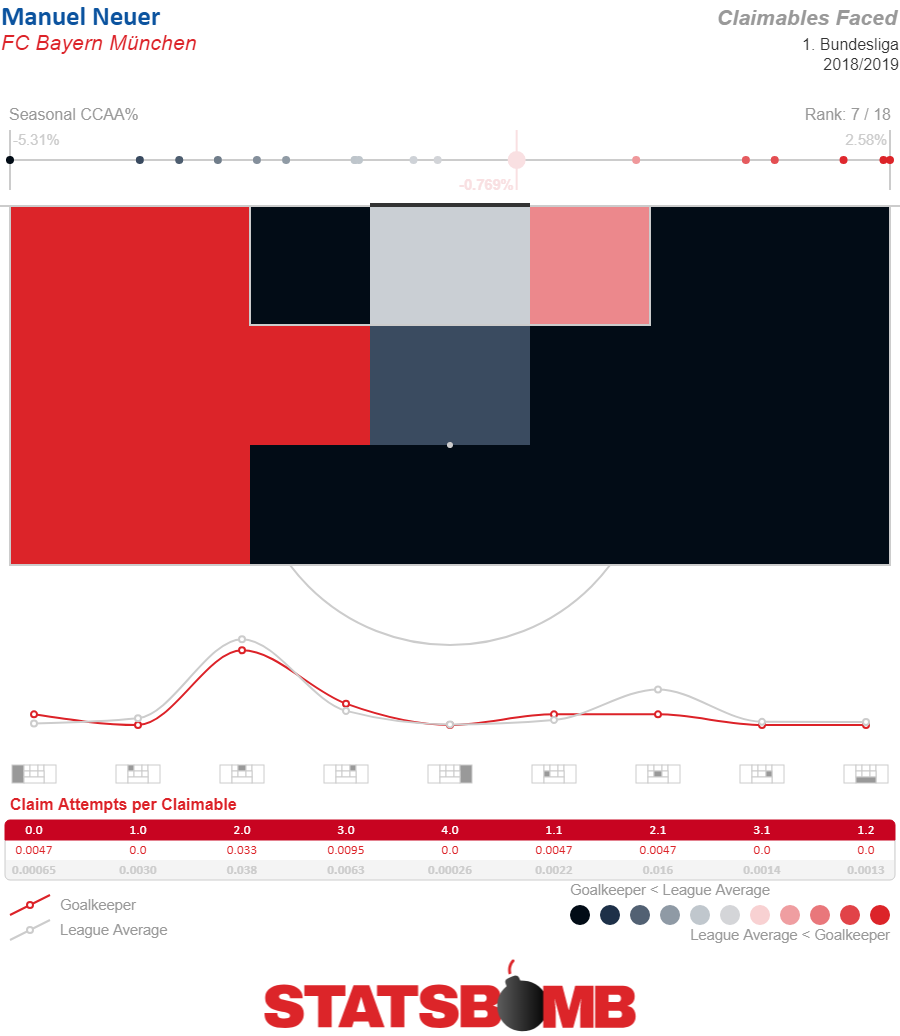 It’s also true that he’s faced very few balls that a keeper would frequently claim. Only five balls into the box all season where the type that a keeper would come for more than 30% of the time. He came for two of them (an exactly average frequency given the balls faced), but he missed one. The fact that his overall success rate on claims is 92% and fine, exists in concert with the fact that he’s only one for two on the more meaningful ones.
It’s also true that he’s faced very few balls that a keeper would frequently claim. Only five balls into the box all season where the type that a keeper would come for more than 30% of the time. He came for two of them (an exactly average frequency given the balls faced), but he missed one. The fact that his overall success rate on claims is 92% and fine, exists in concert with the fact that he’s only one for two on the more meaningful ones. 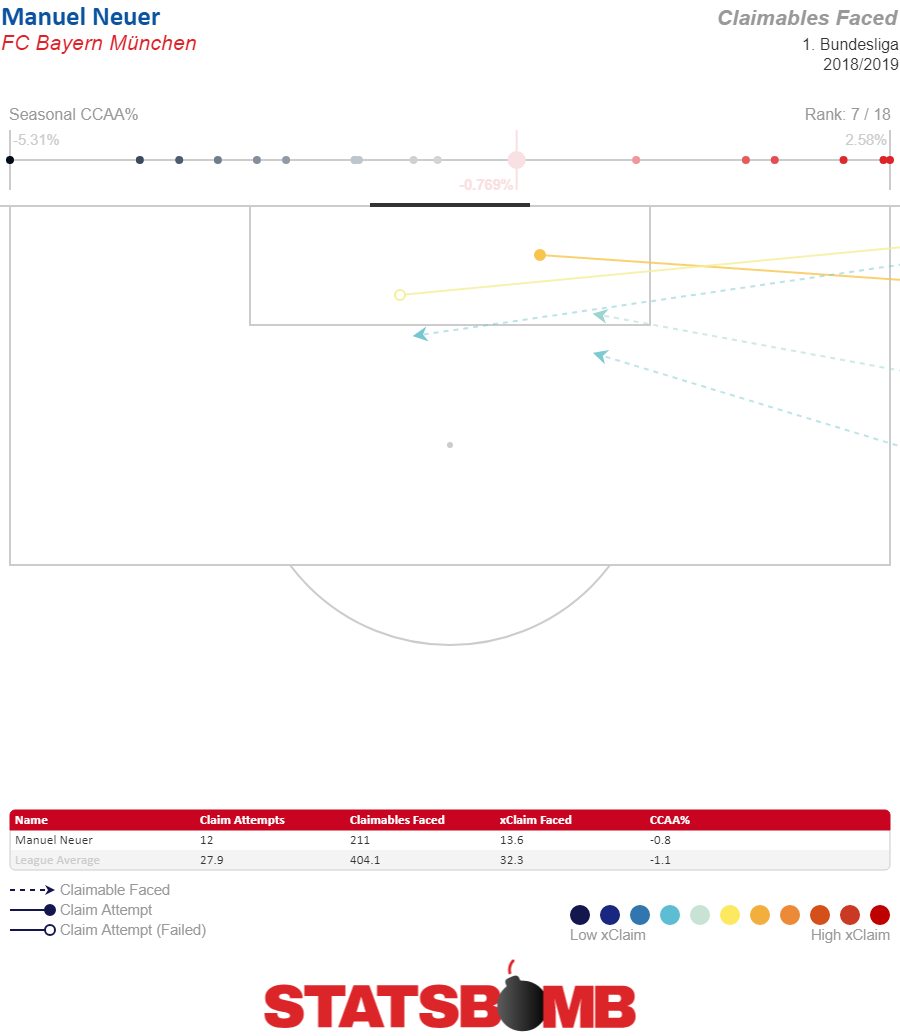 In a different context maybe these stats wouldn’t be so alarming. Players have bad stretches, even great ones. Keepers have bad years, or half years, and bounce back all the time. But, taking a step back actually makes the situation look worse, not better. Neuer isn’t young, he’ll be 33 in March. Keepers often have longer athletic lives than outfield players, but 33 is still pushing it. It’s an age where, in a vacuum you’d expect a keeper to get worse not better. Then there are the injuries. Neuer missed the vast majority of last season with foot problems. His performance still hasn’t recovered. Correlation doesn’t equal causation, but it doesn’t rule it out either. Put it all together and this is a four-alarm fire for Bayern. Neuer used to be a star, now he’s facing a life comes at you fast crisis. All of a sudden he’s become an old keeper coming off an injury who hasn’t come close to recovering his form half a season after getting back on the pitch. If Bayern don’t rally over the last half of the season and catch Borussia Dortmund, Neuer’s deterioration will be a large part of what went wrong. A year ago it would have been sacrilegious to question Neuer’s place. Now? Unless he improves dramatically over the second half of this season it’s clear Bayern will need to upgrade the keeper position going into next year. The keeper might be a legend, but eventually father time comes for legends too.
In a different context maybe these stats wouldn’t be so alarming. Players have bad stretches, even great ones. Keepers have bad years, or half years, and bounce back all the time. But, taking a step back actually makes the situation look worse, not better. Neuer isn’t young, he’ll be 33 in March. Keepers often have longer athletic lives than outfield players, but 33 is still pushing it. It’s an age where, in a vacuum you’d expect a keeper to get worse not better. Then there are the injuries. Neuer missed the vast majority of last season with foot problems. His performance still hasn’t recovered. Correlation doesn’t equal causation, but it doesn’t rule it out either. Put it all together and this is a four-alarm fire for Bayern. Neuer used to be a star, now he’s facing a life comes at you fast crisis. All of a sudden he’s become an old keeper coming off an injury who hasn’t come close to recovering his form half a season after getting back on the pitch. If Bayern don’t rally over the last half of the season and catch Borussia Dortmund, Neuer’s deterioration will be a large part of what went wrong. A year ago it would have been sacrilegious to question Neuer’s place. Now? Unless he improves dramatically over the second half of this season it’s clear Bayern will need to upgrade the keeper position going into next year. The keeper might be a legend, but eventually father time comes for legends too.